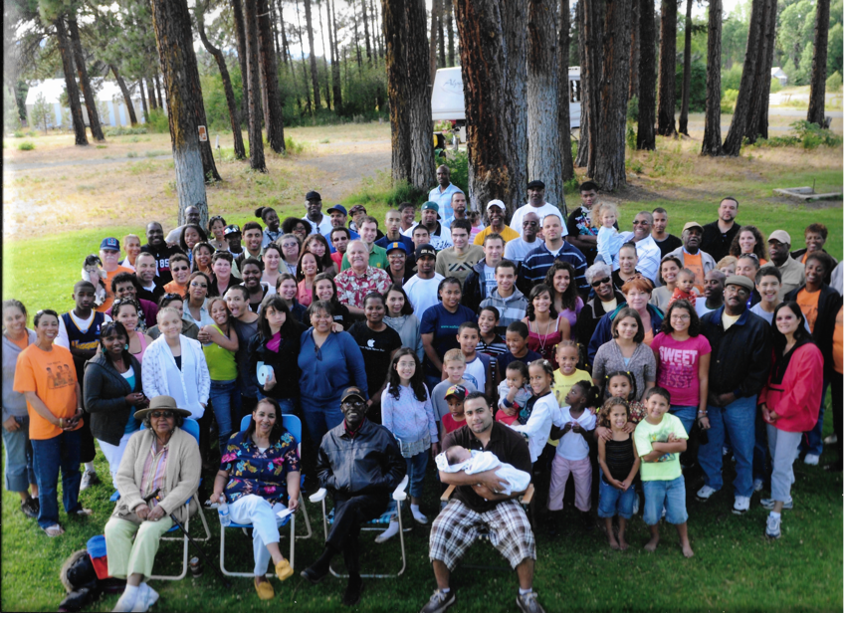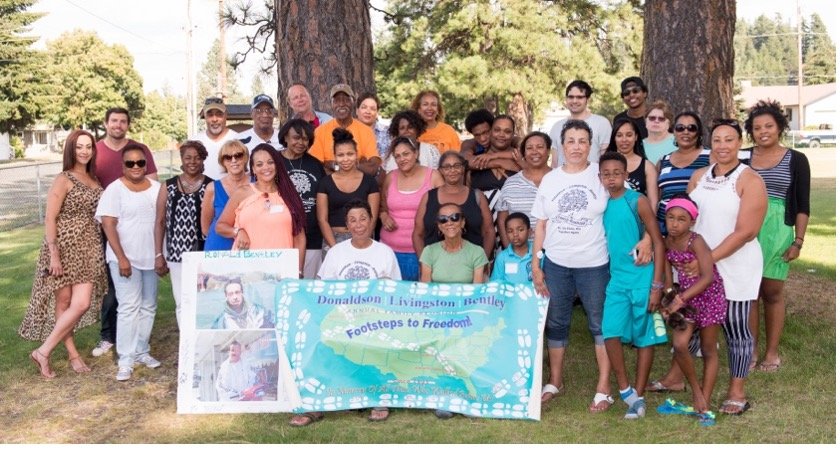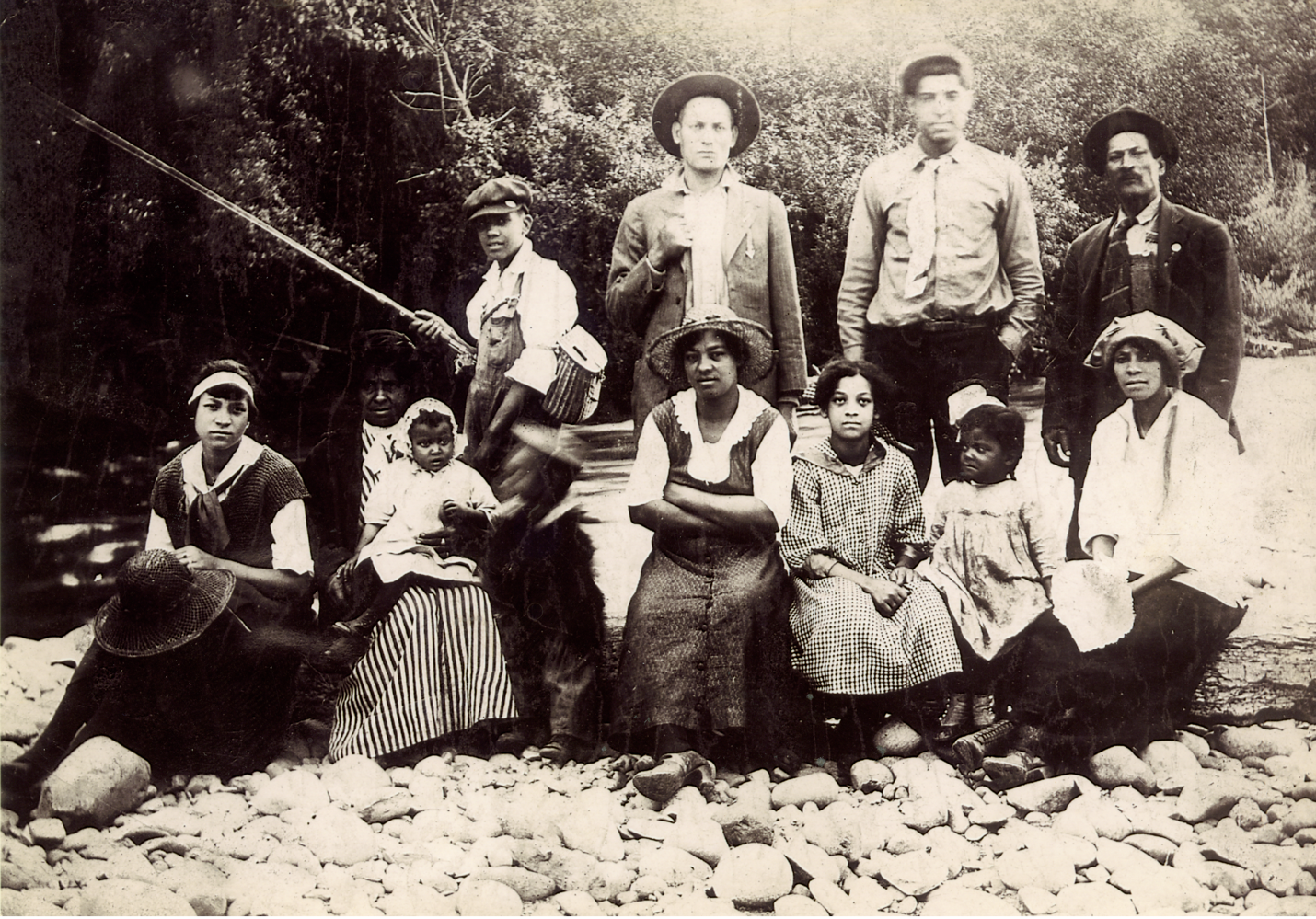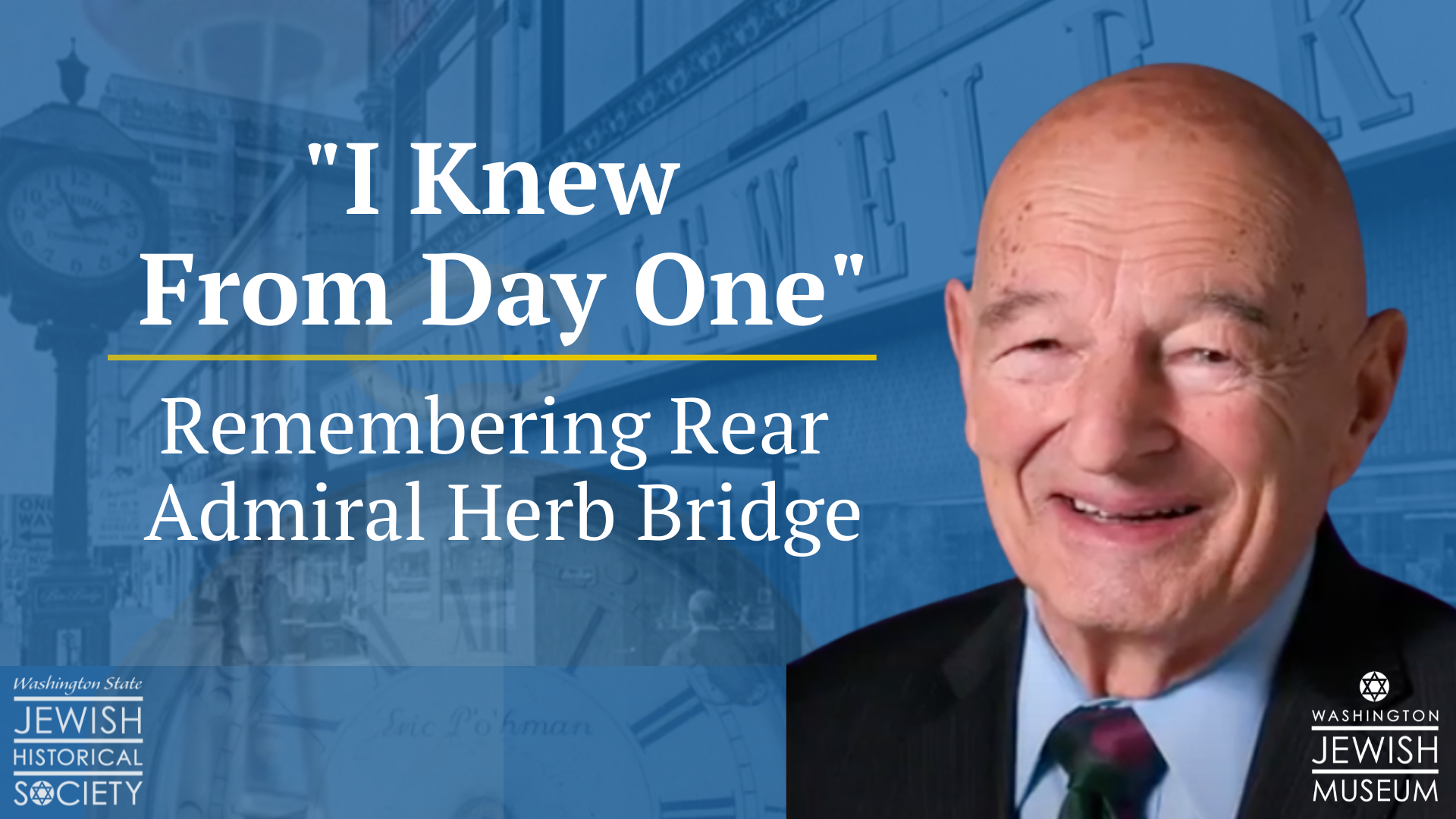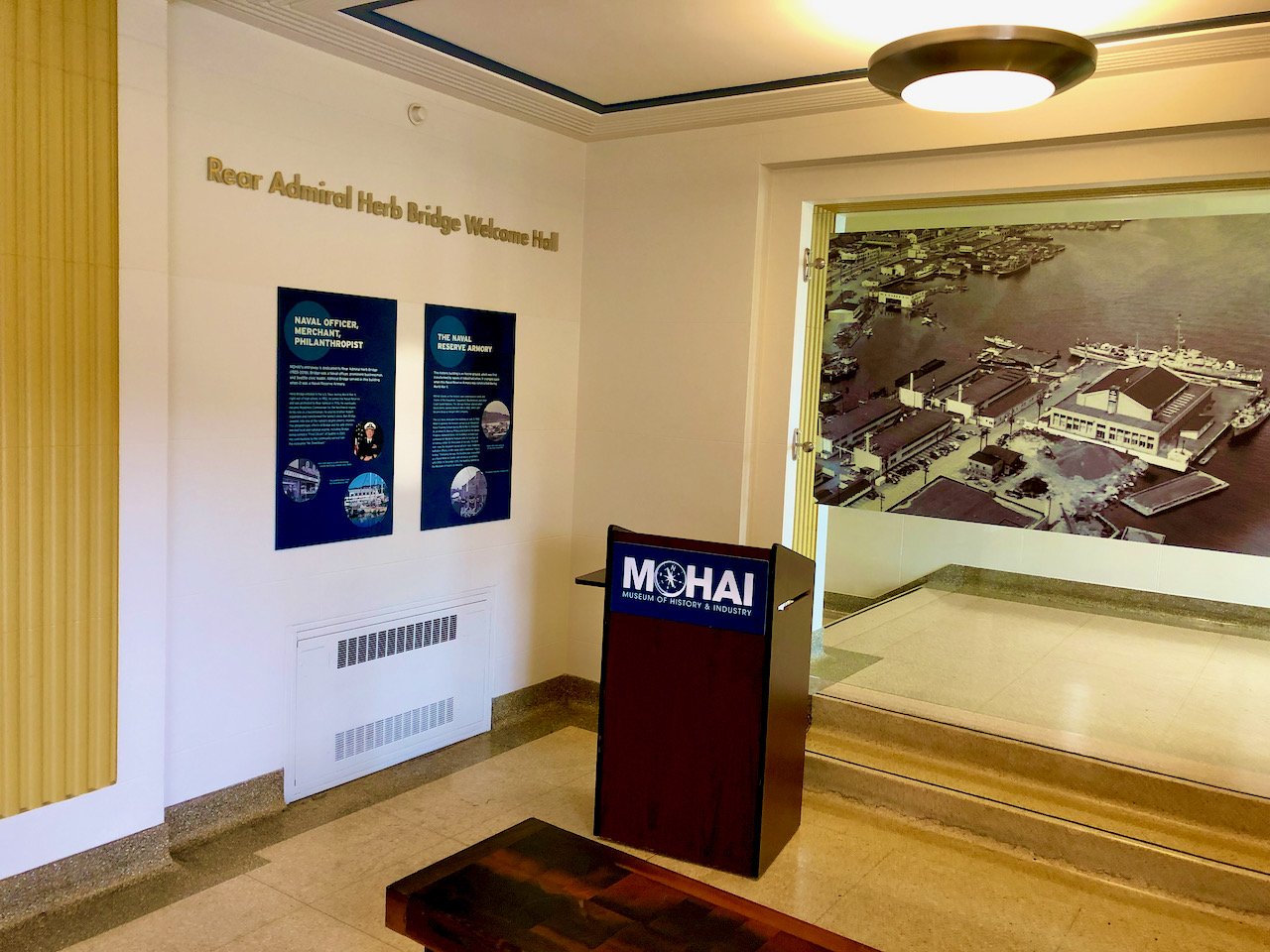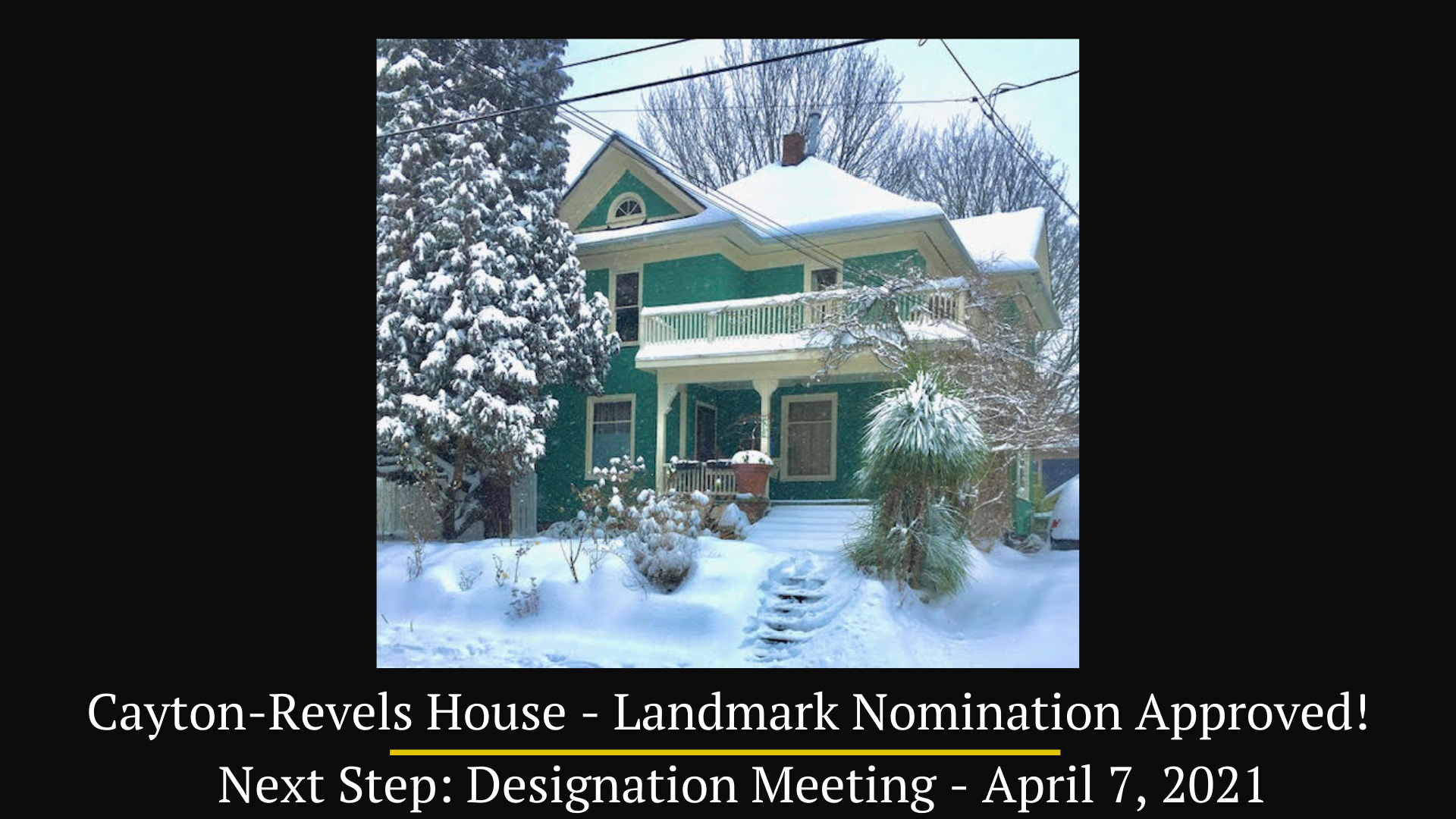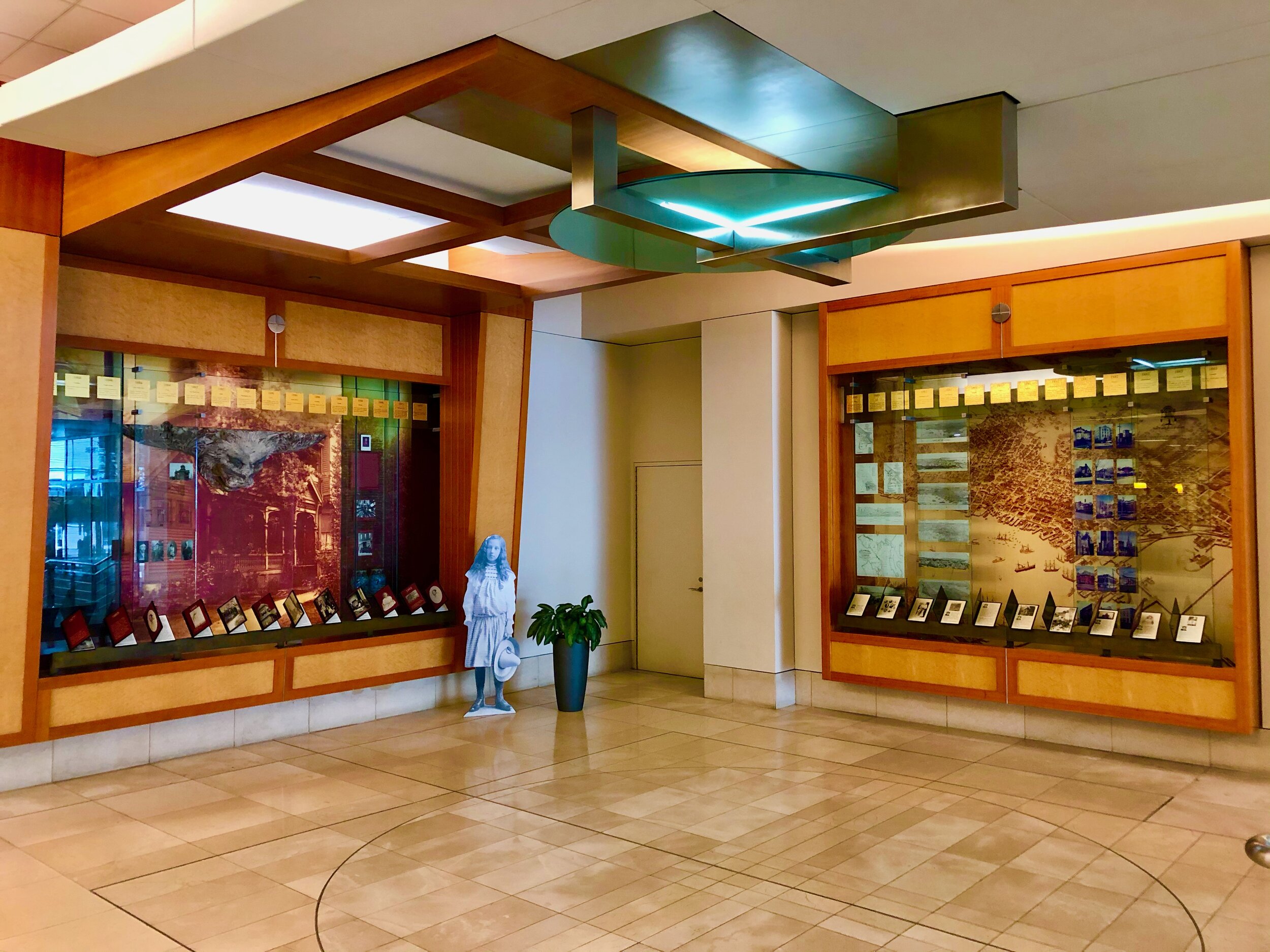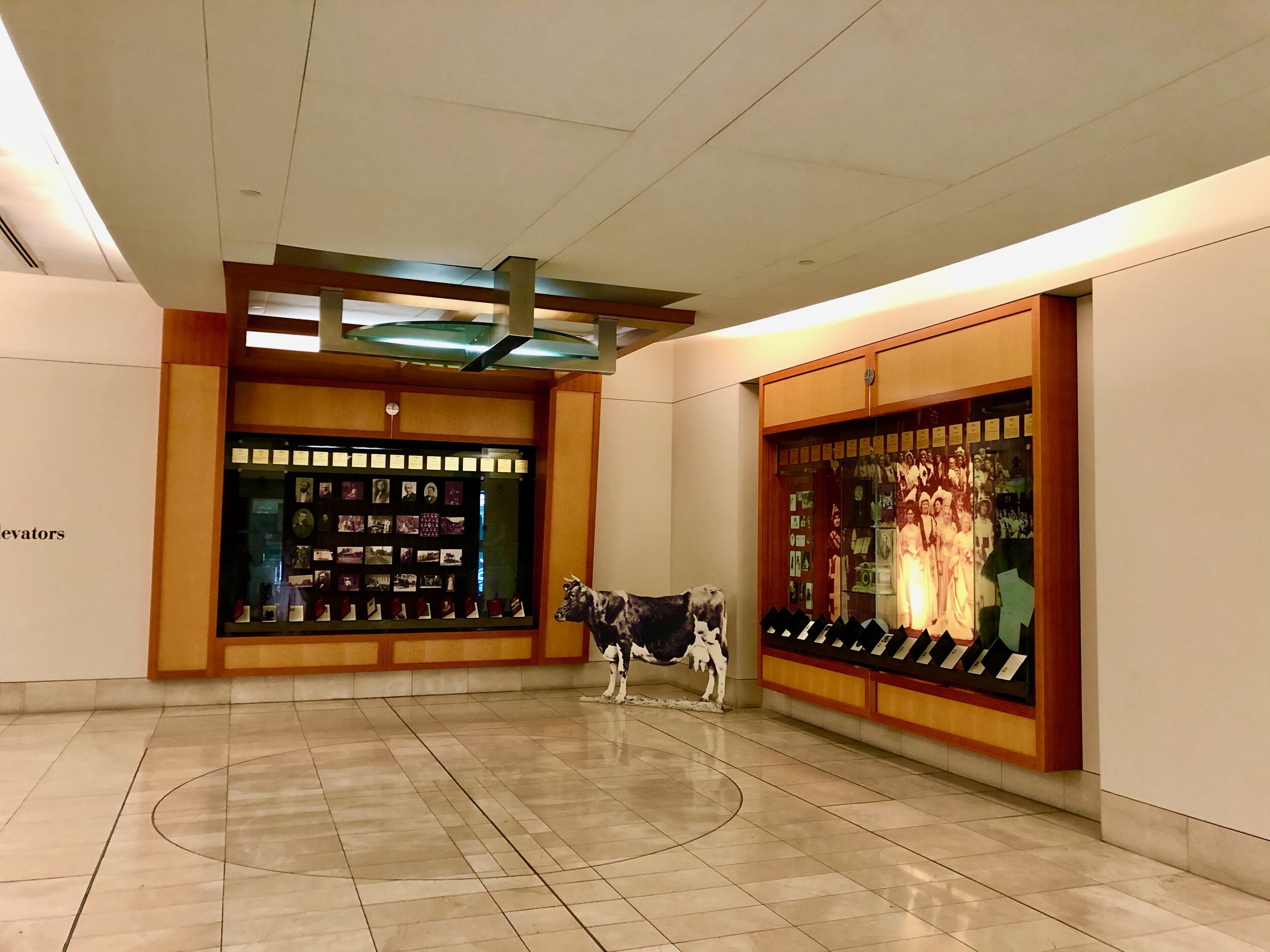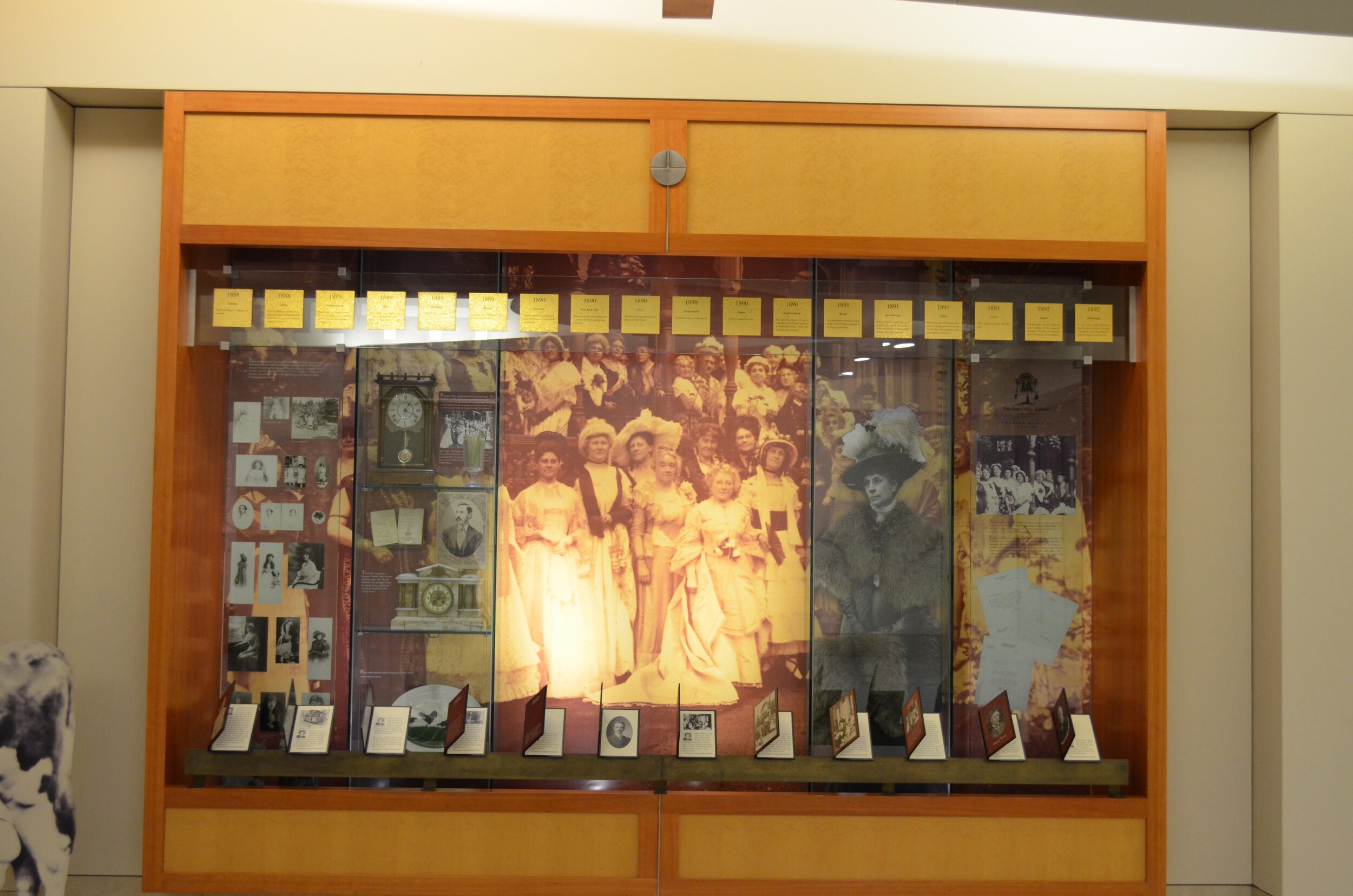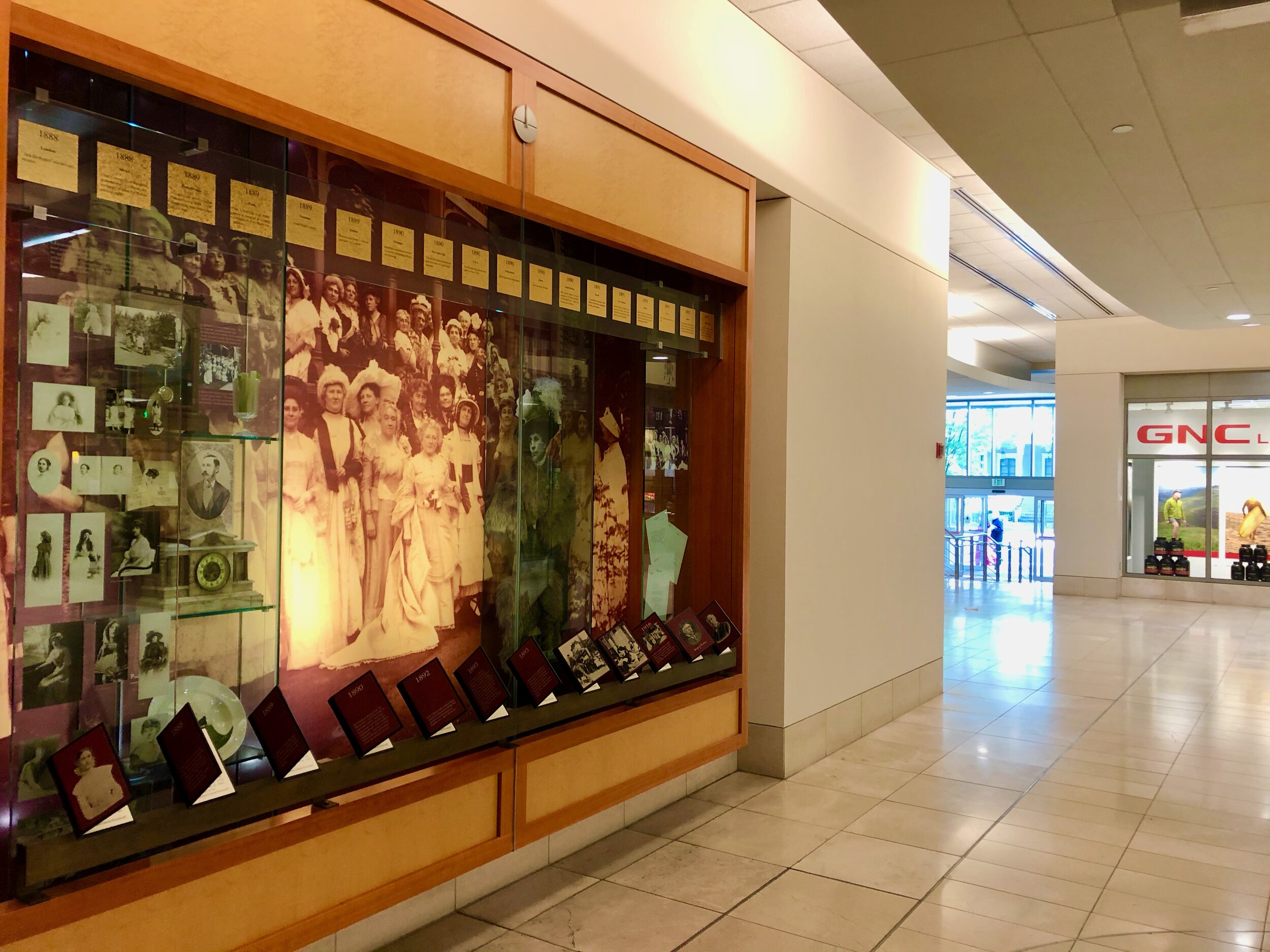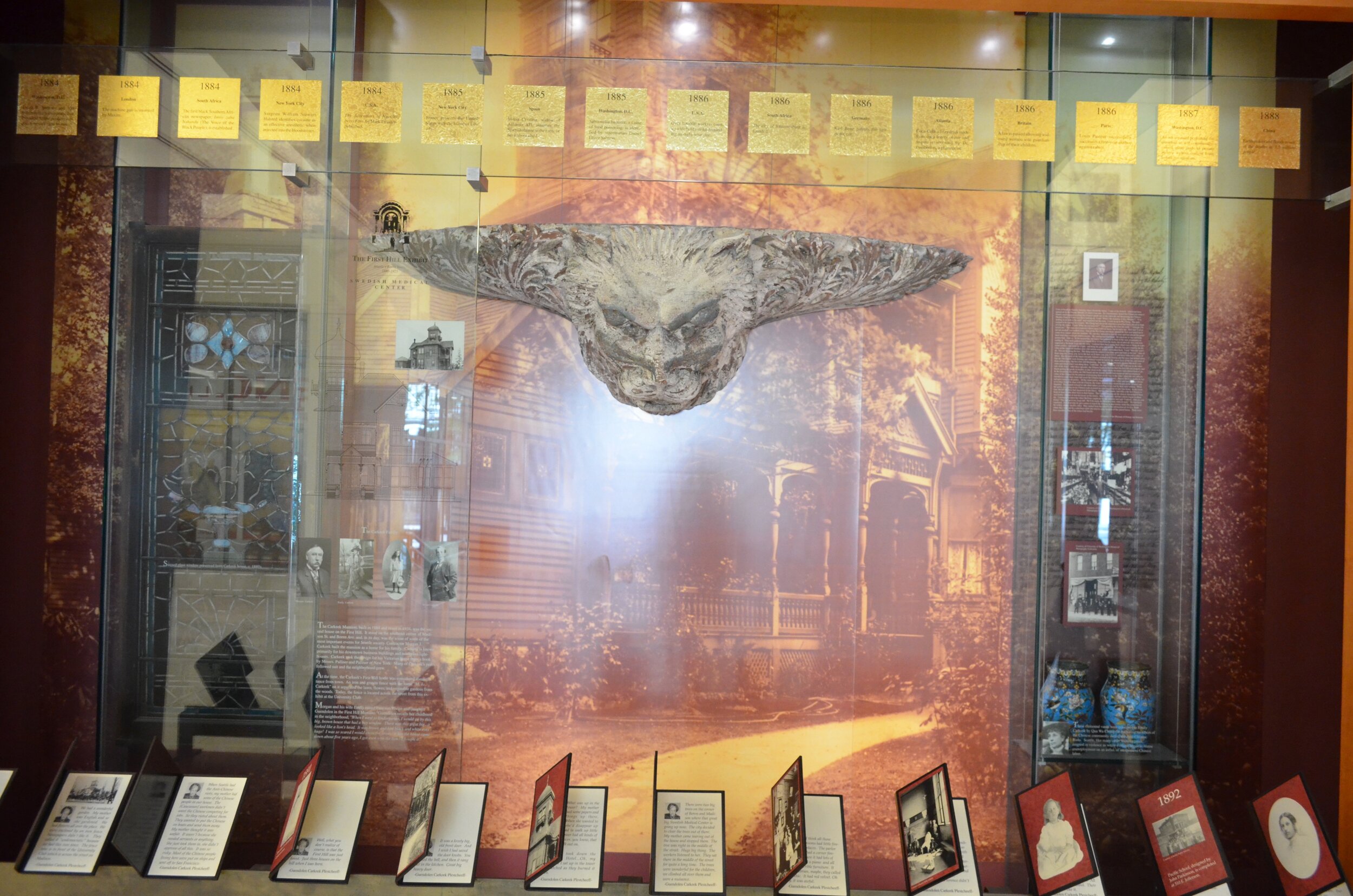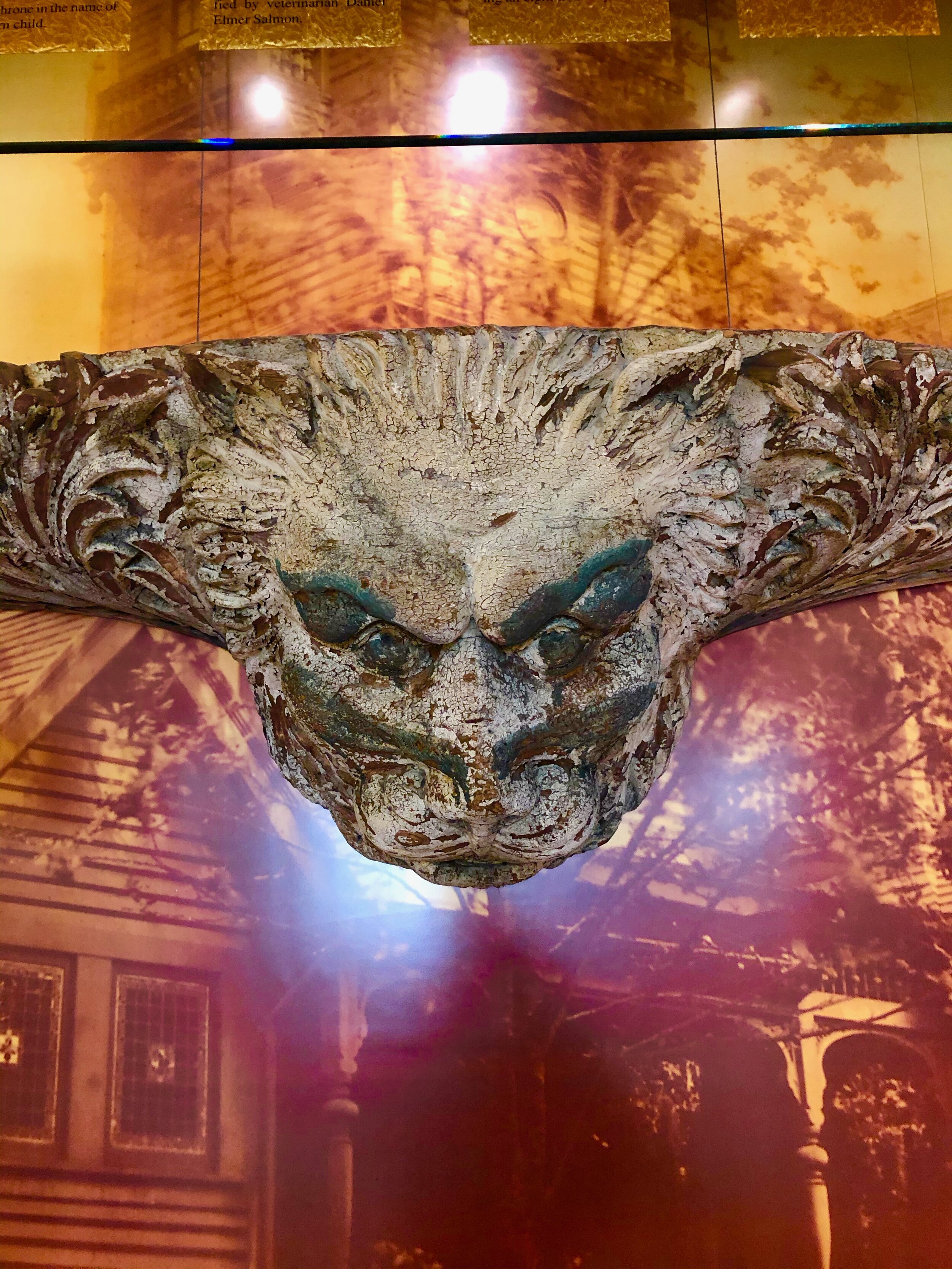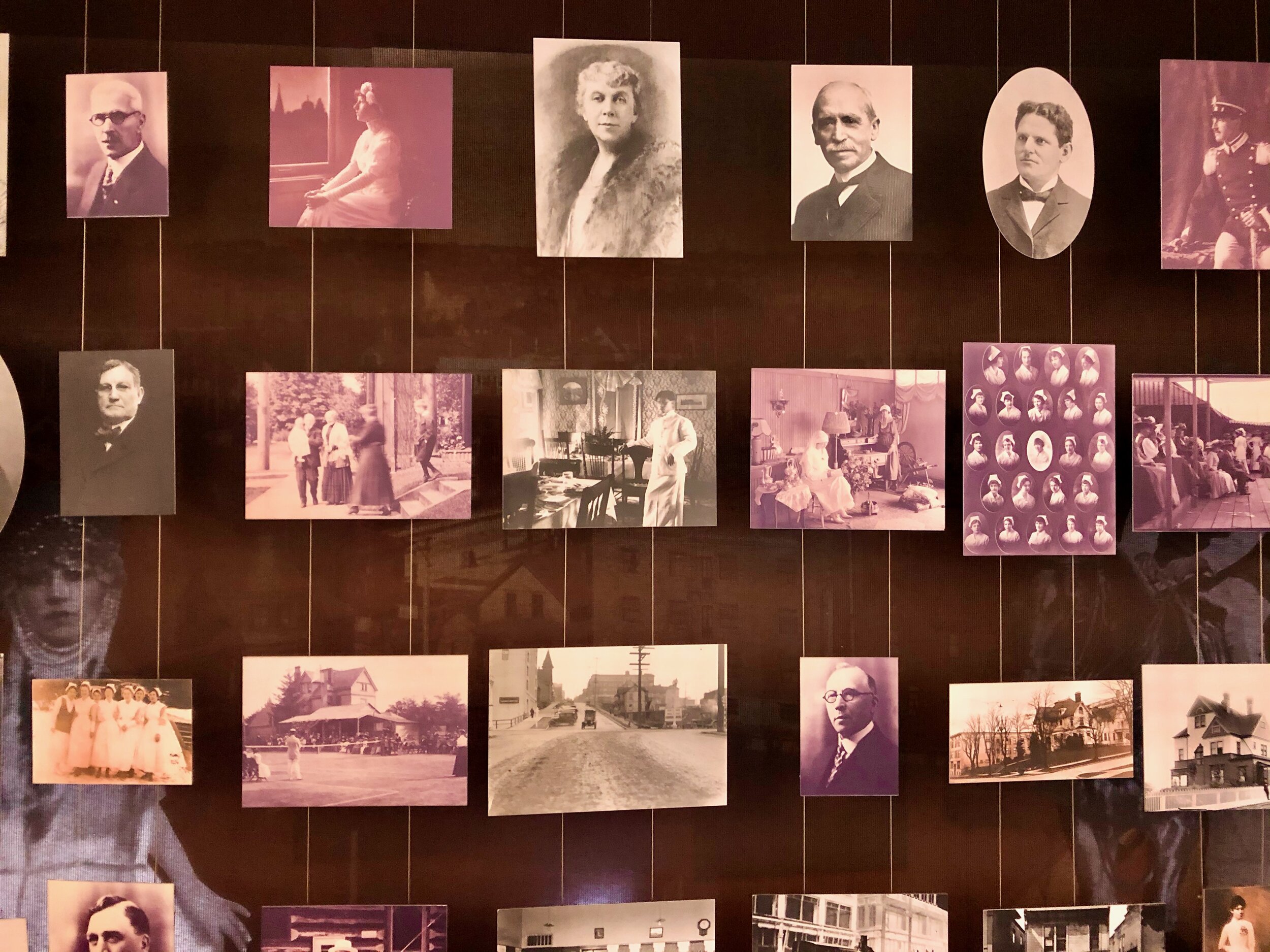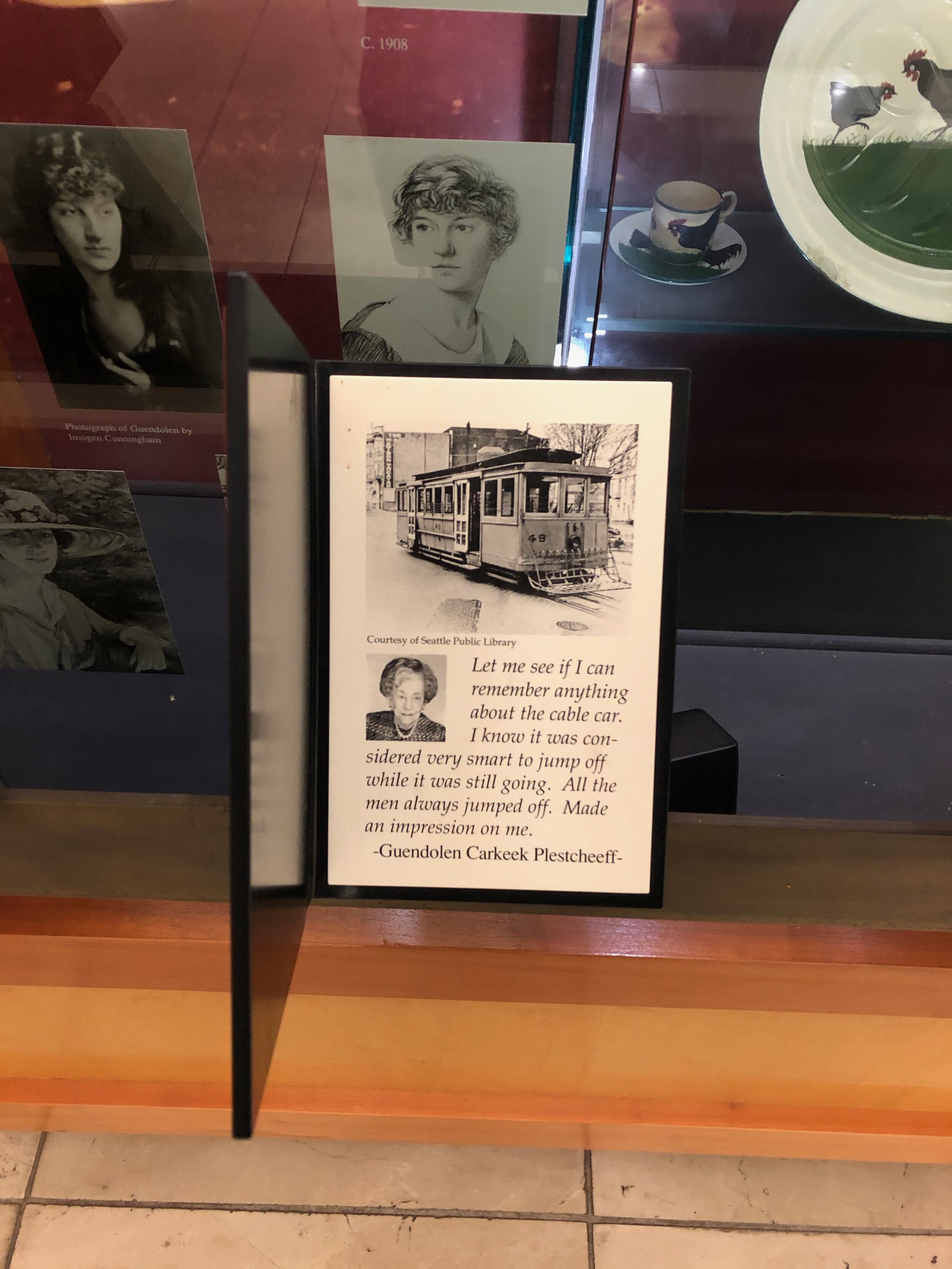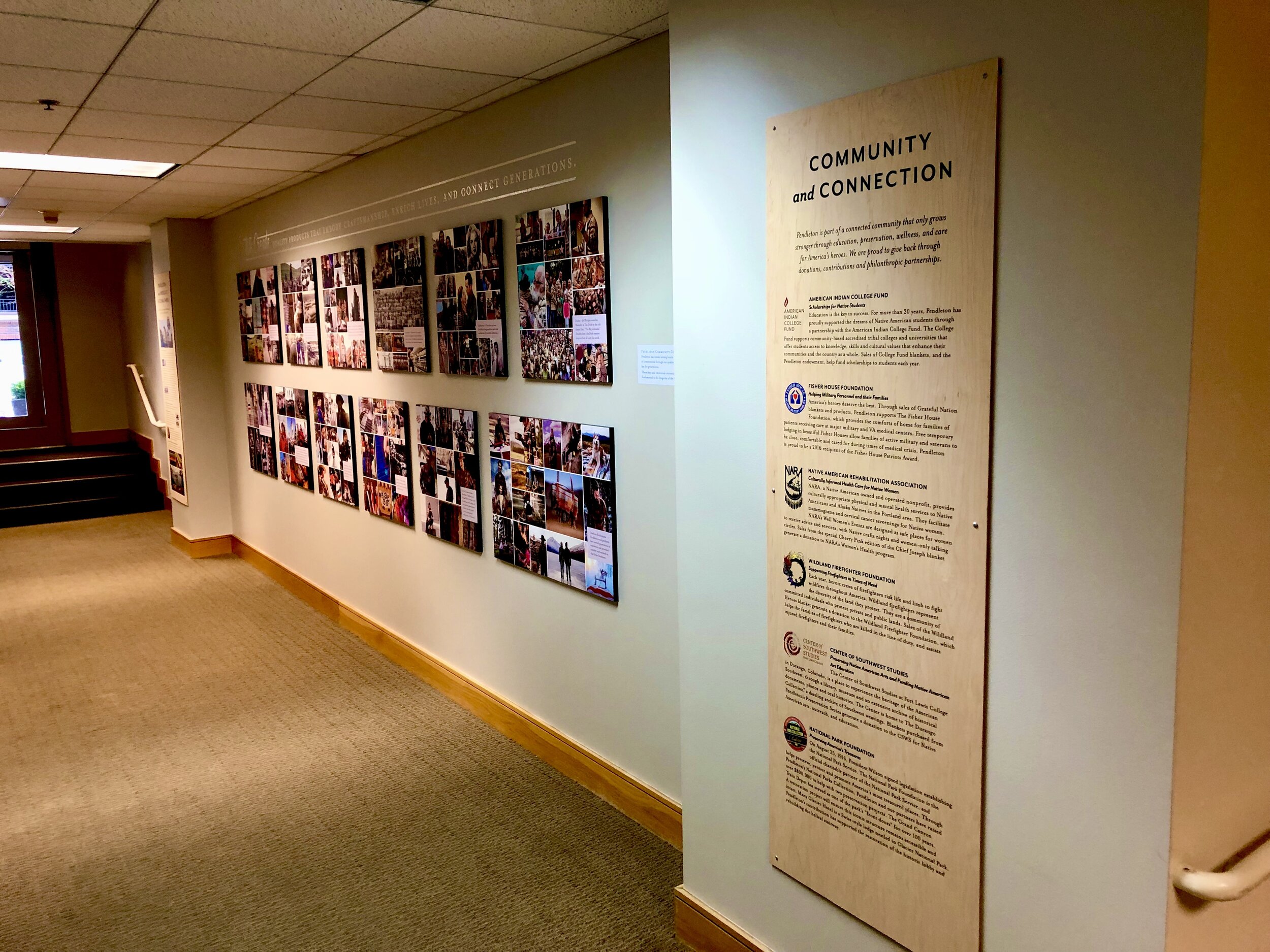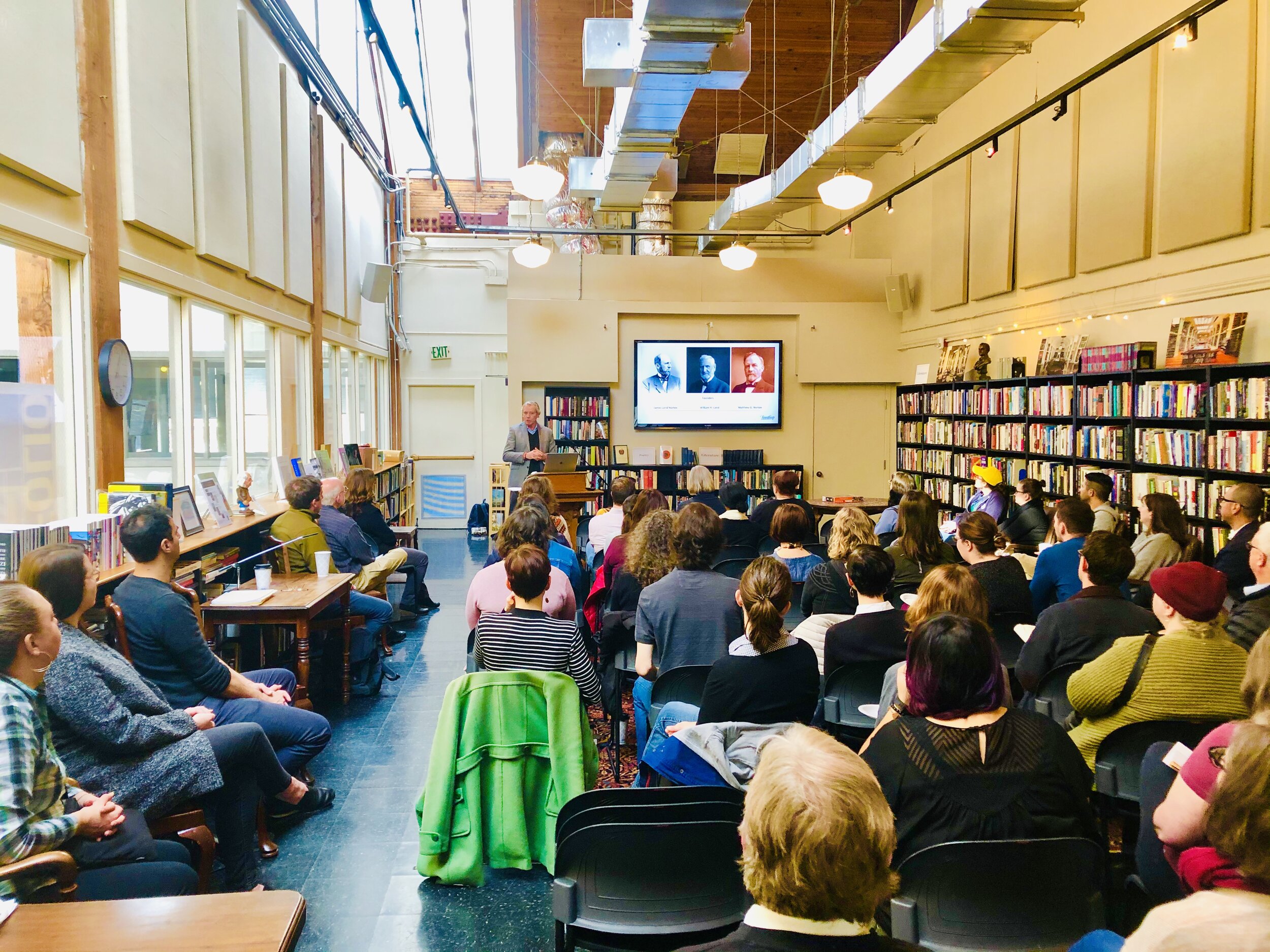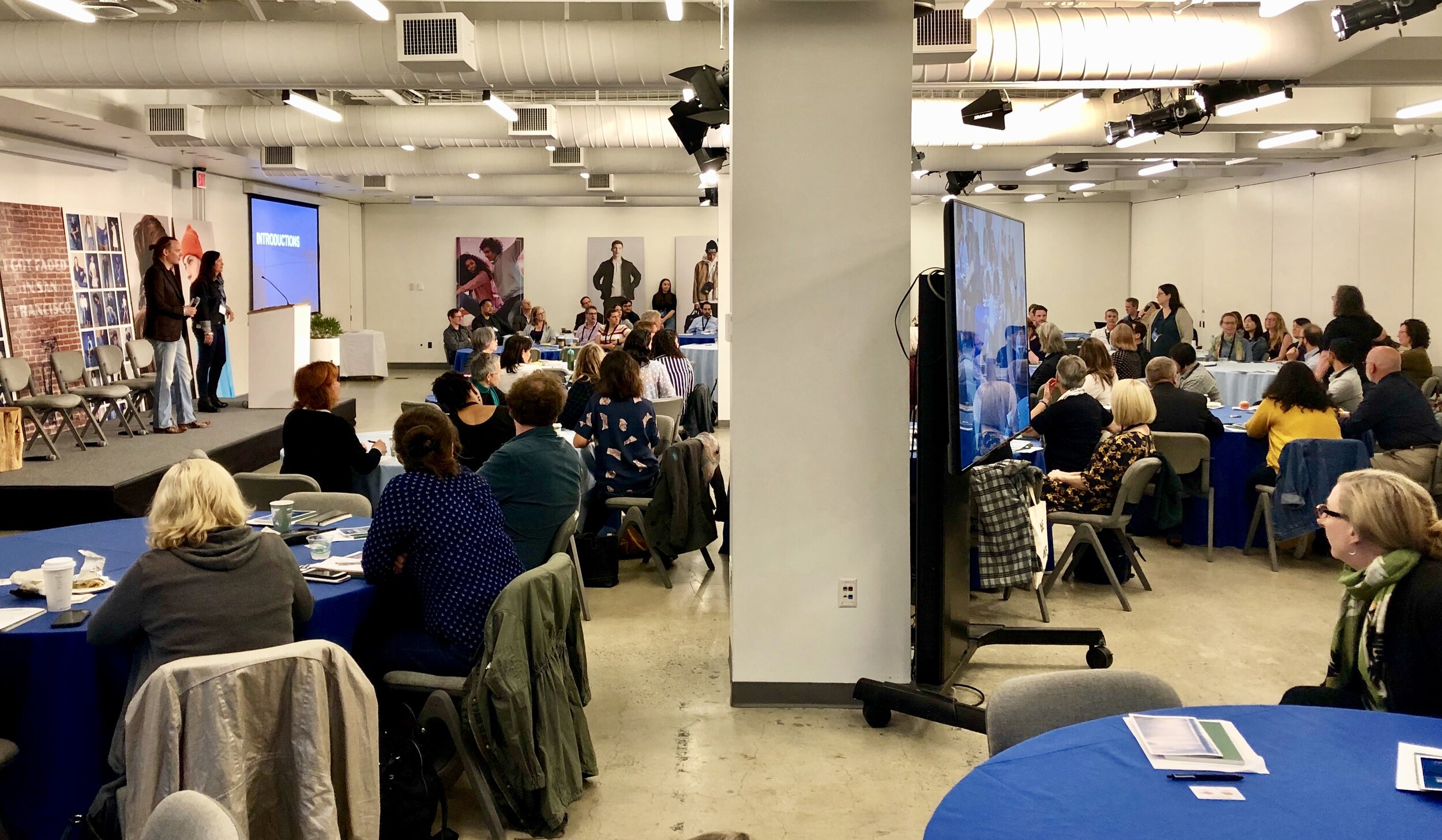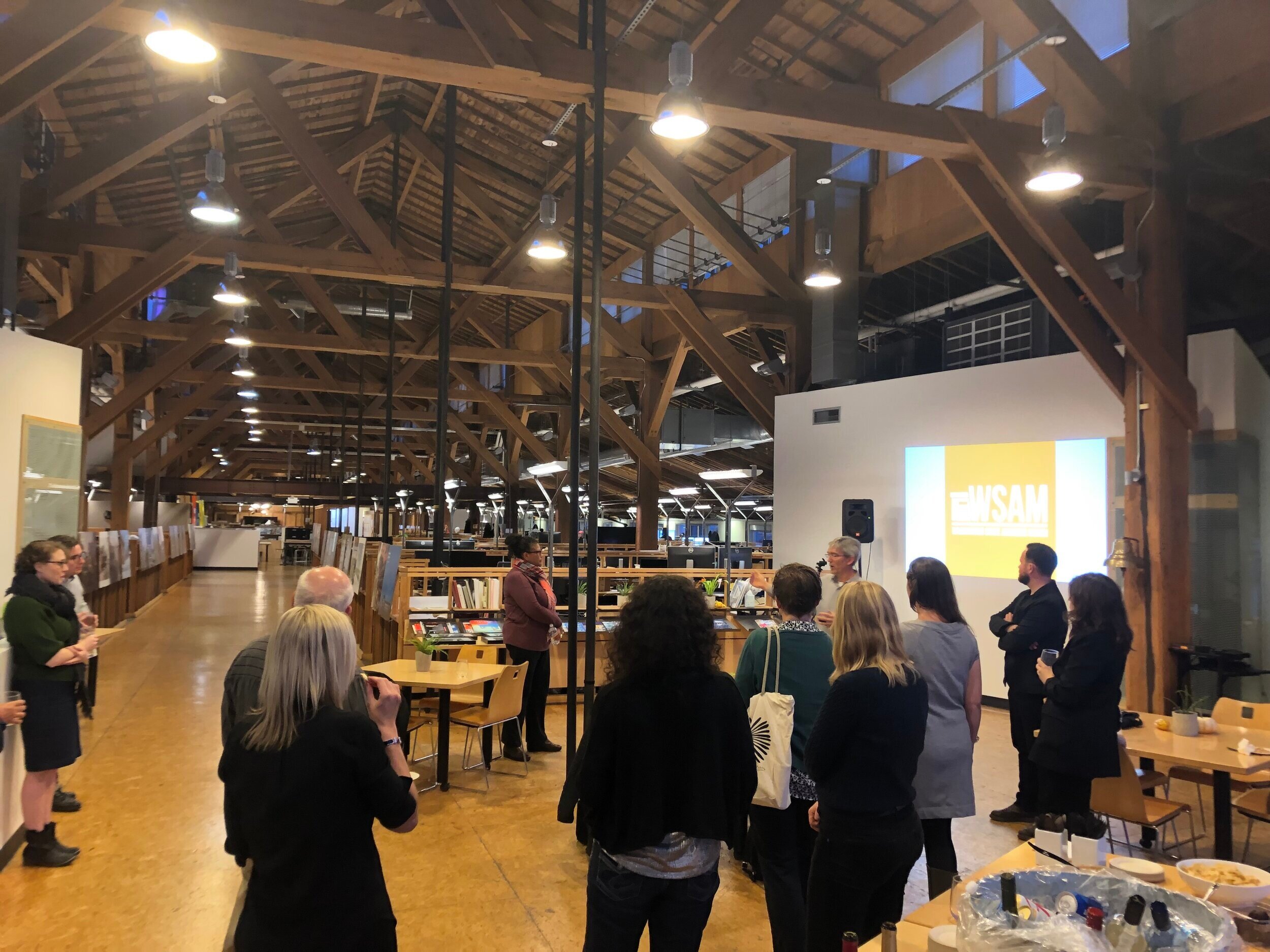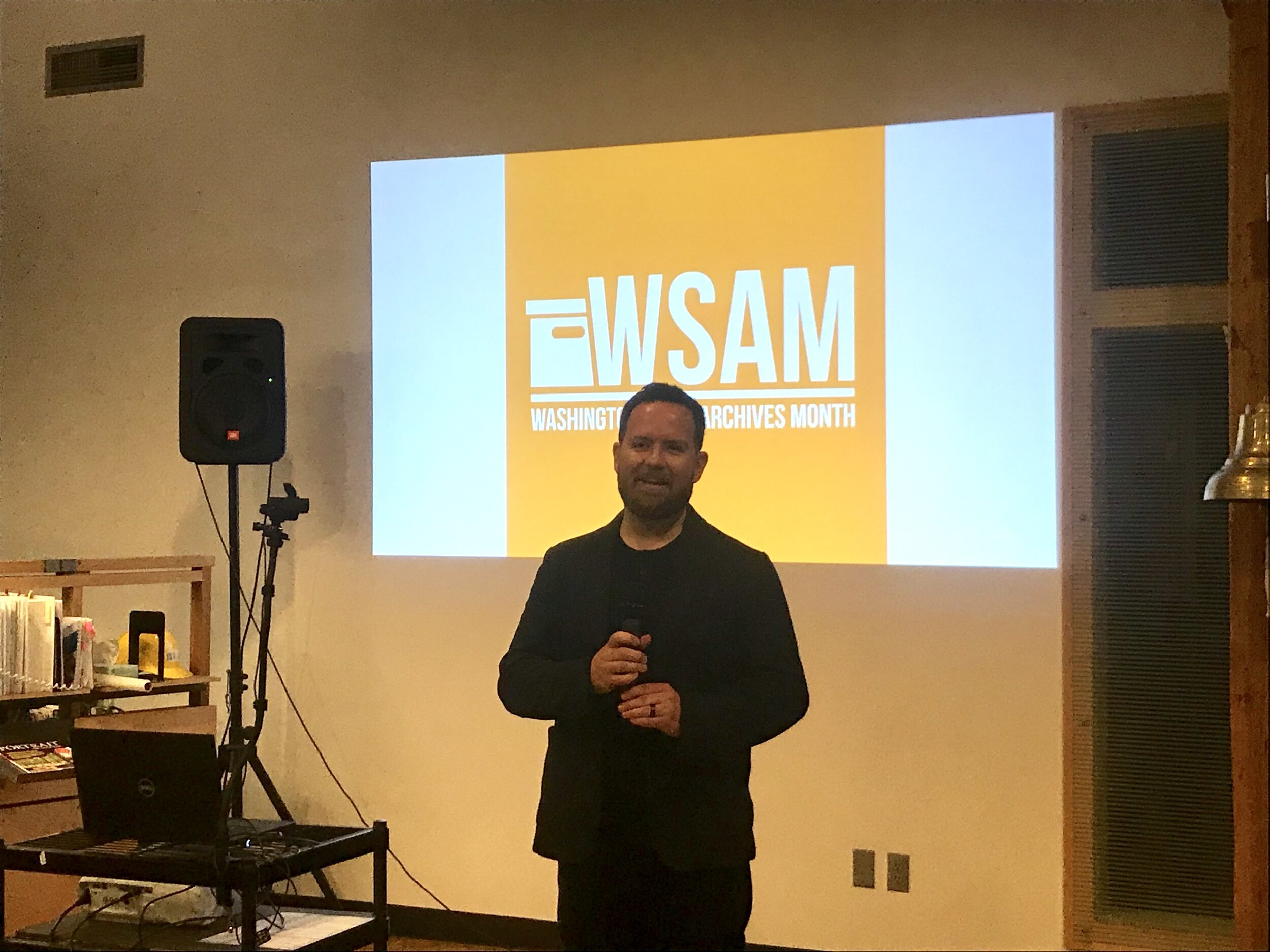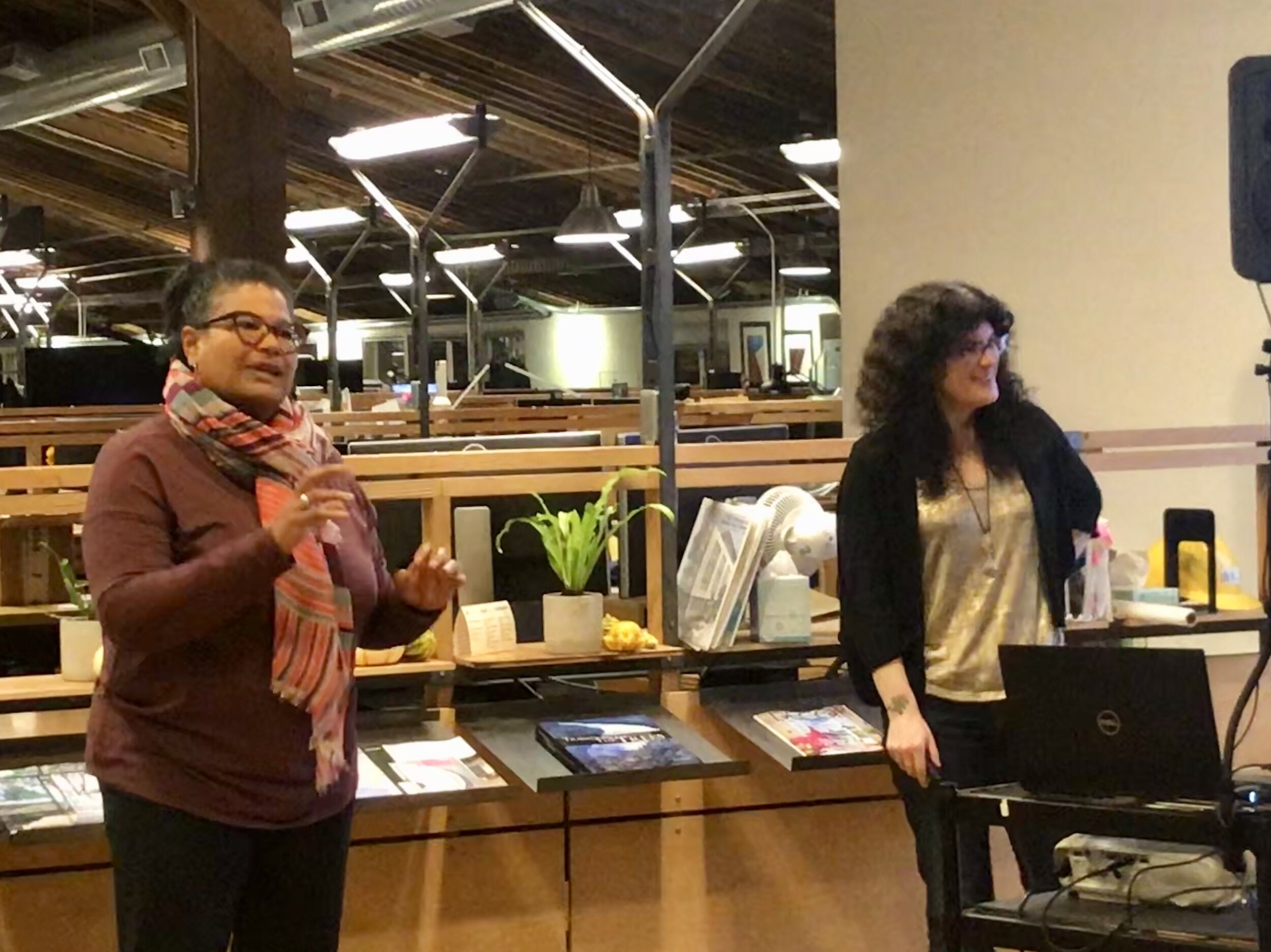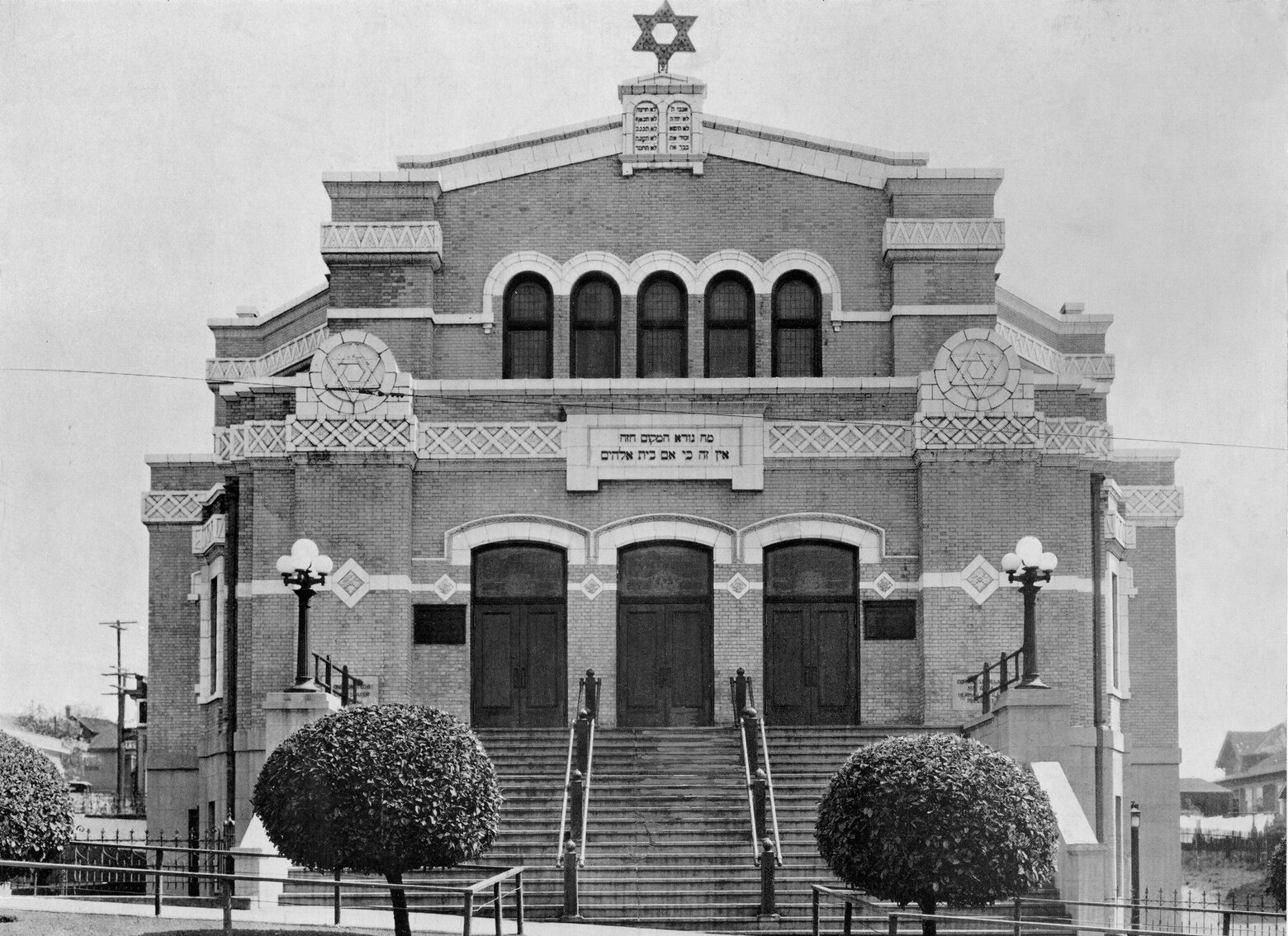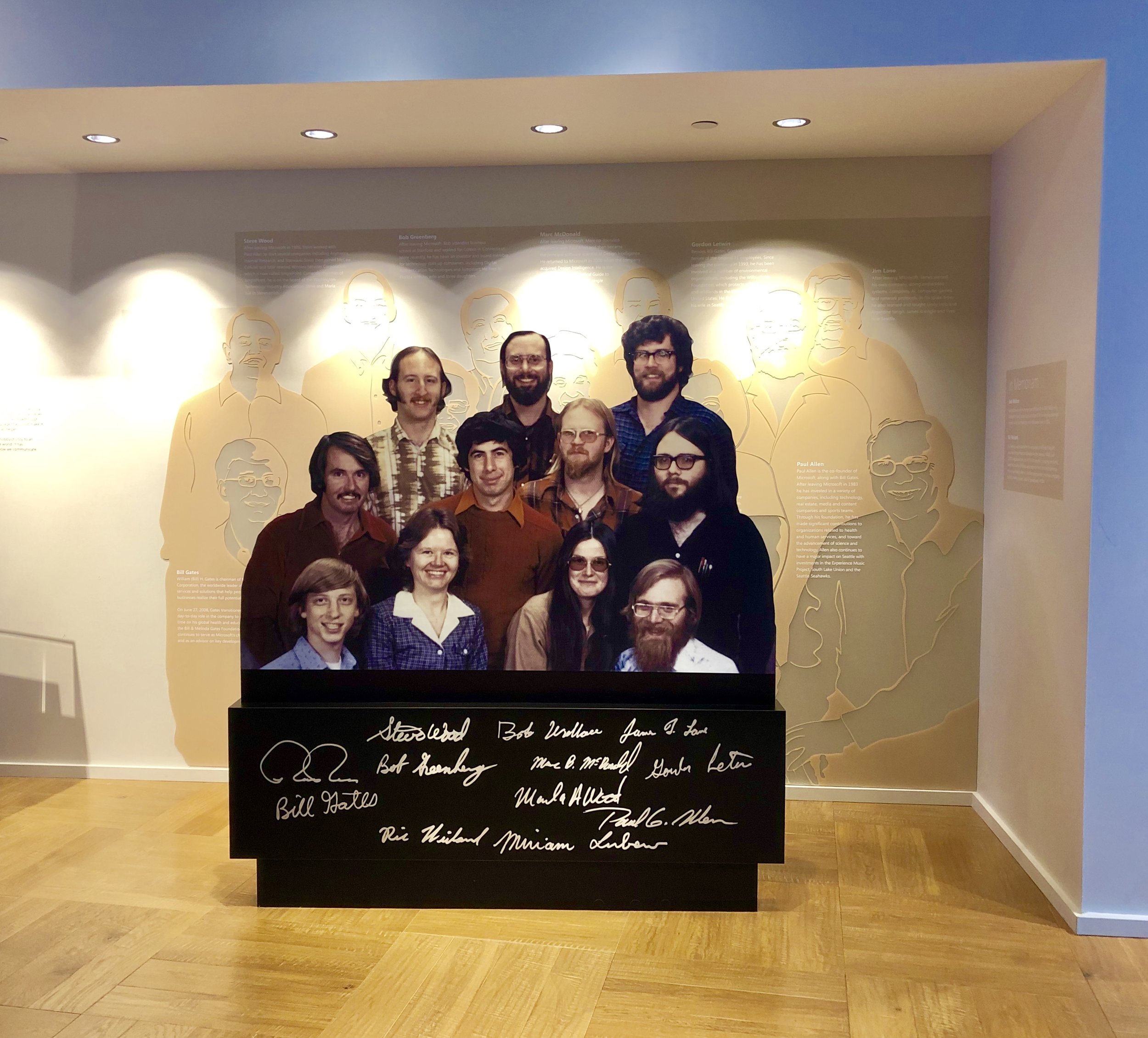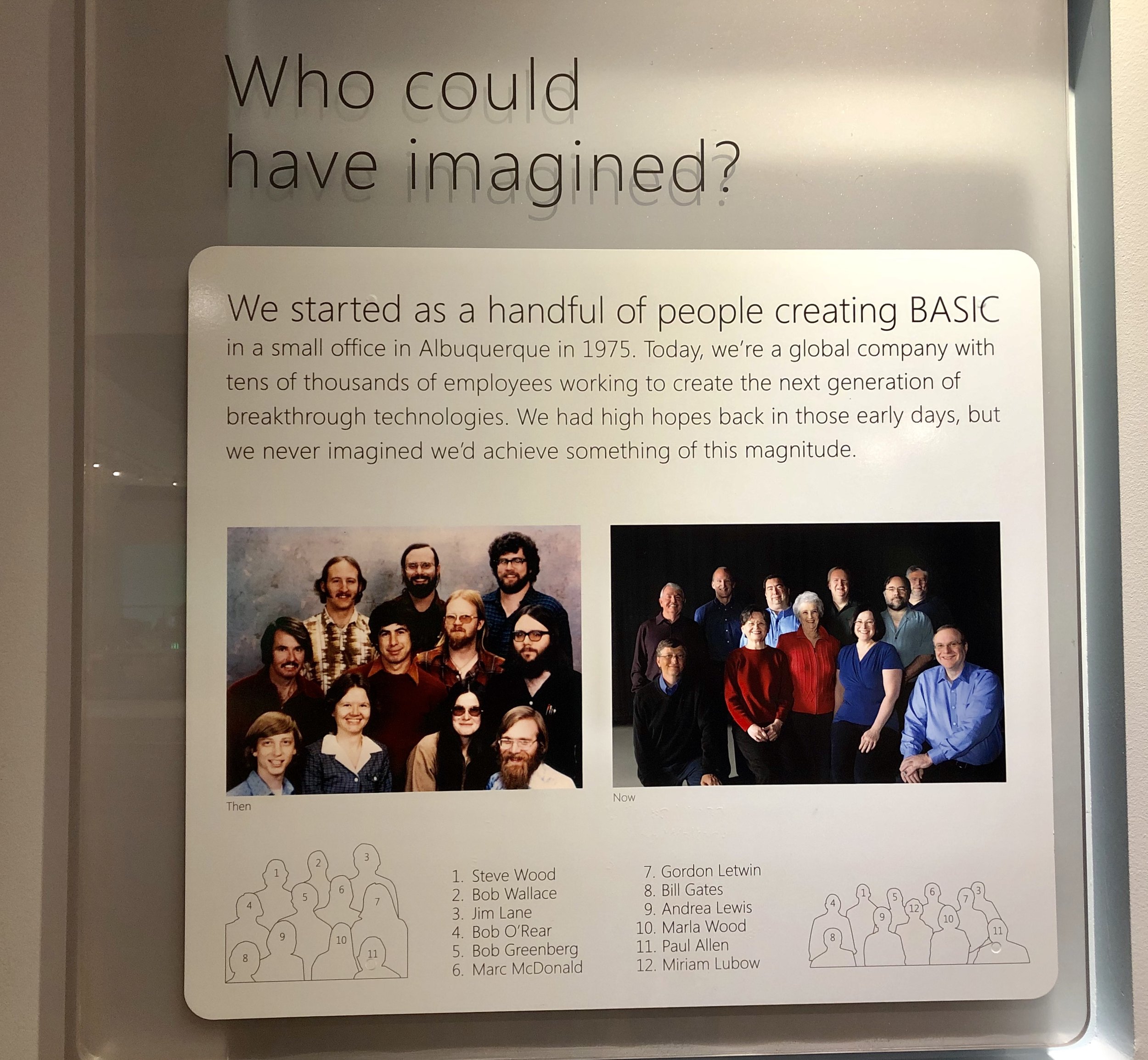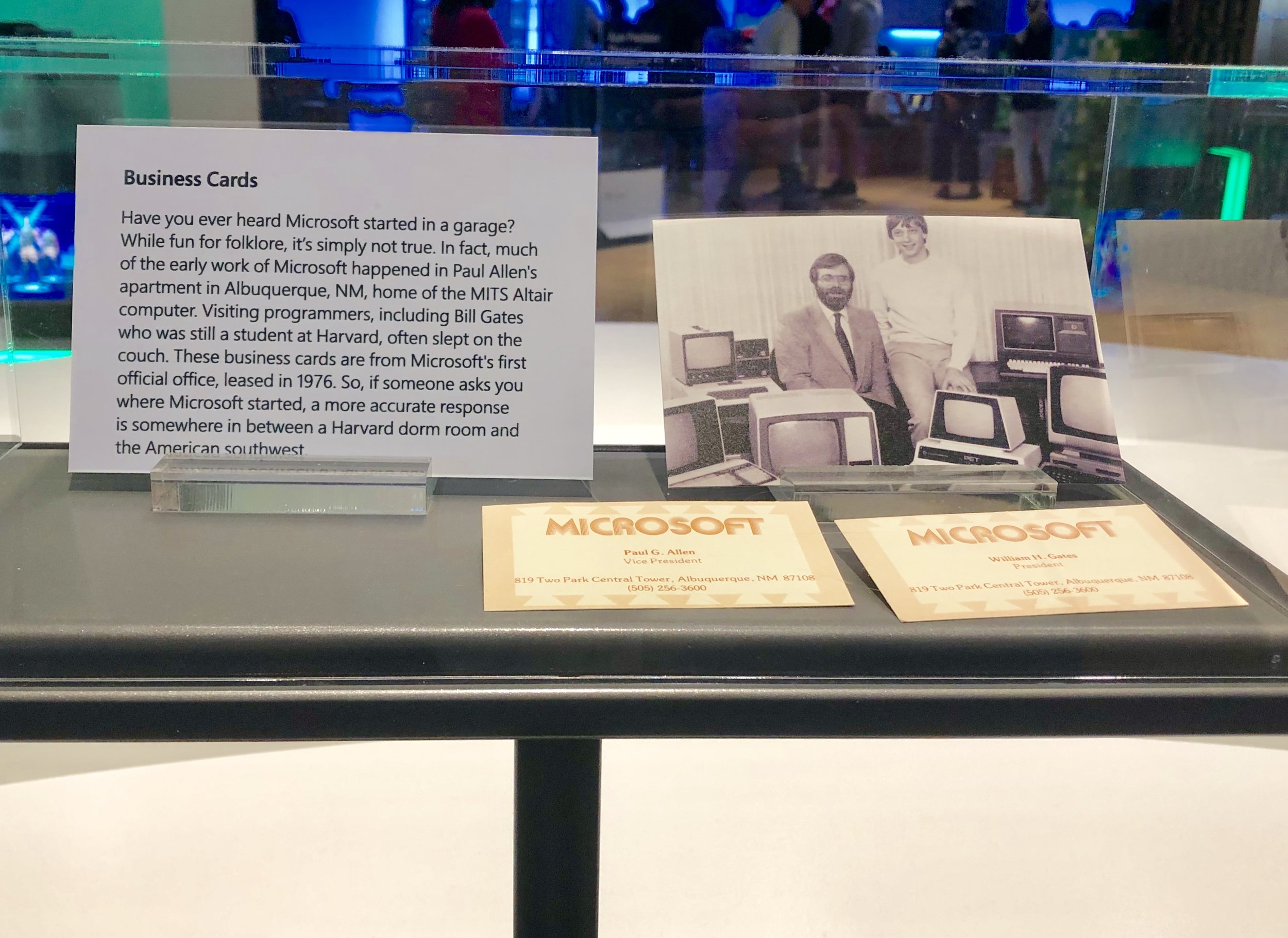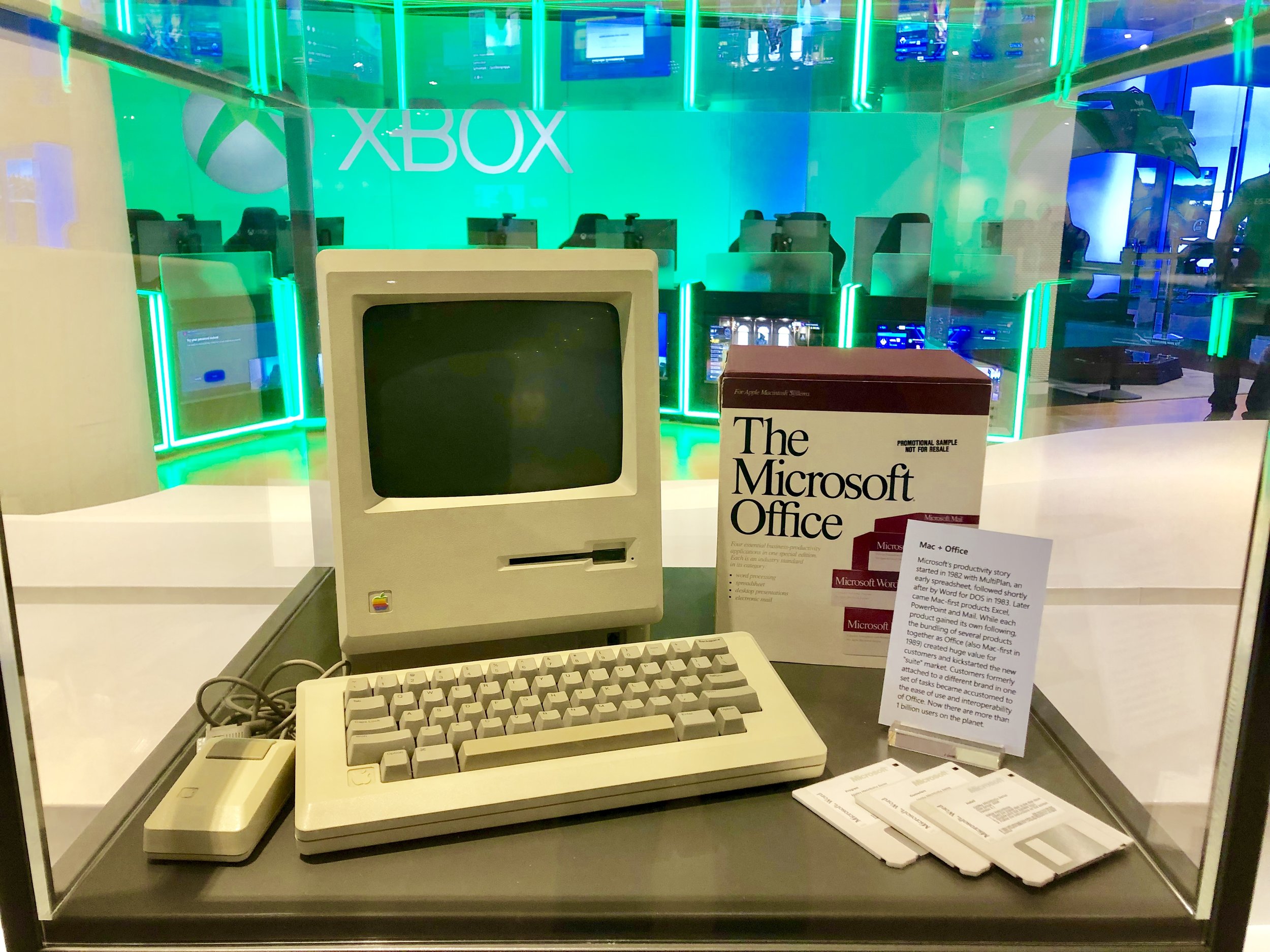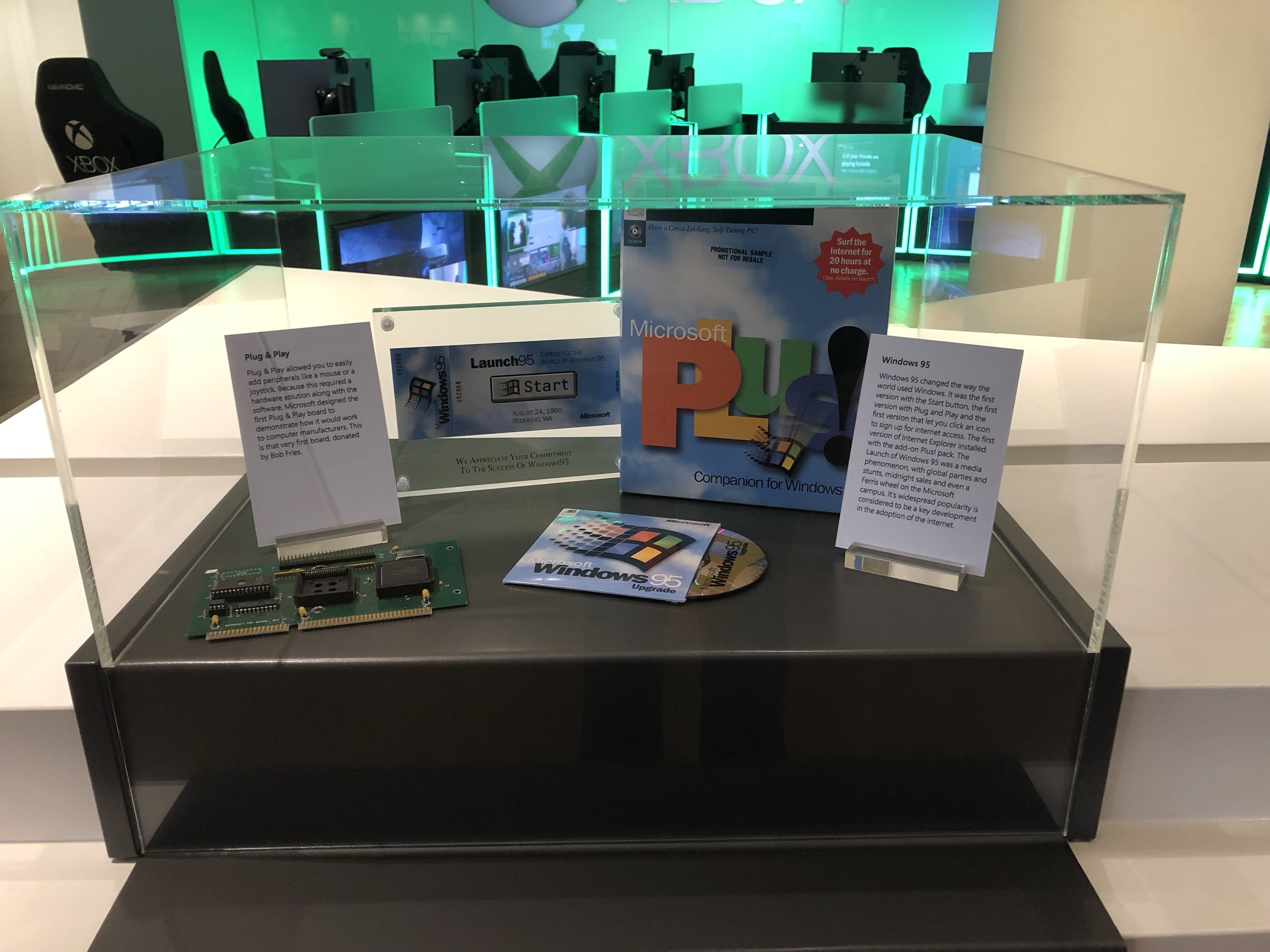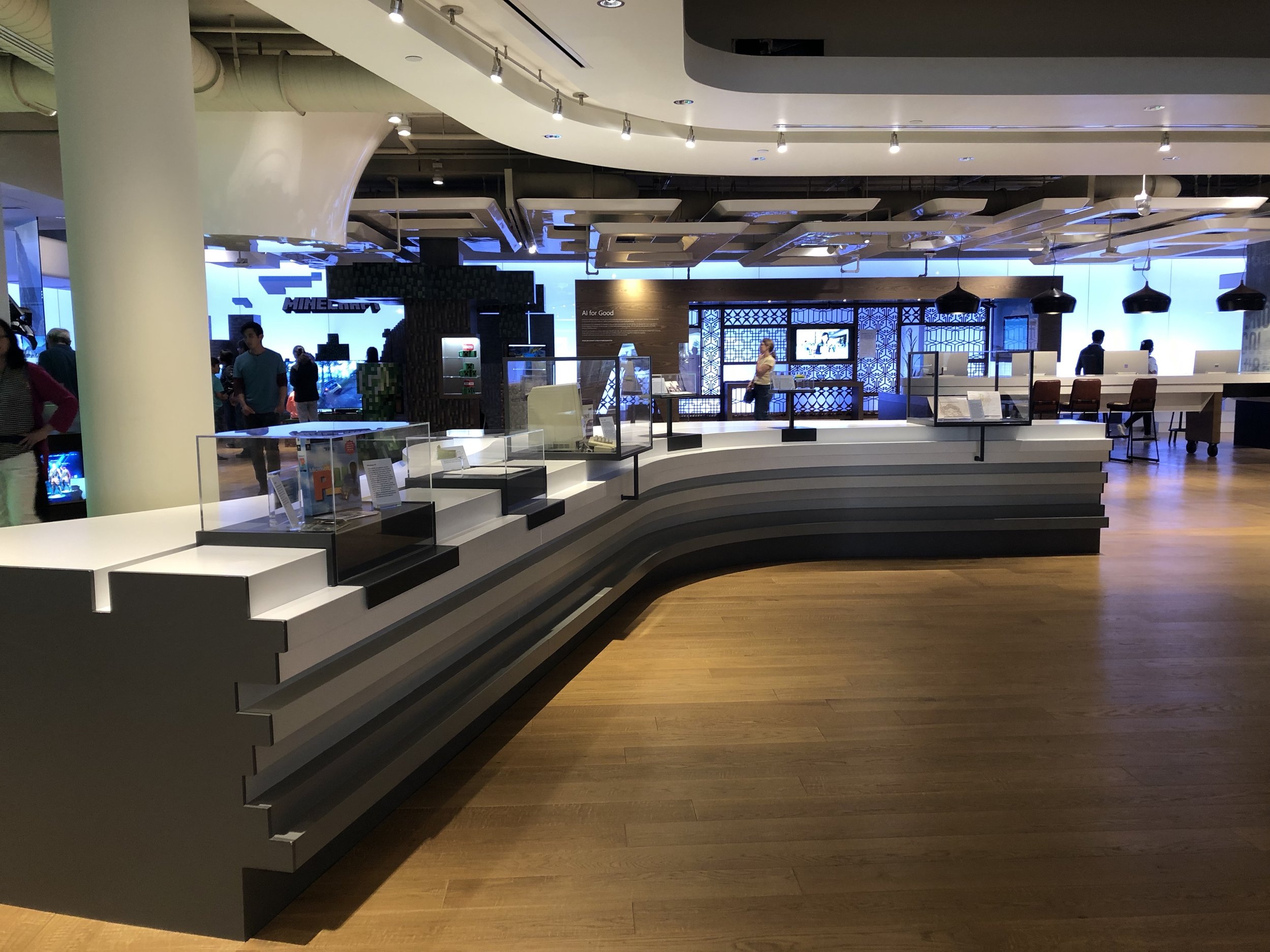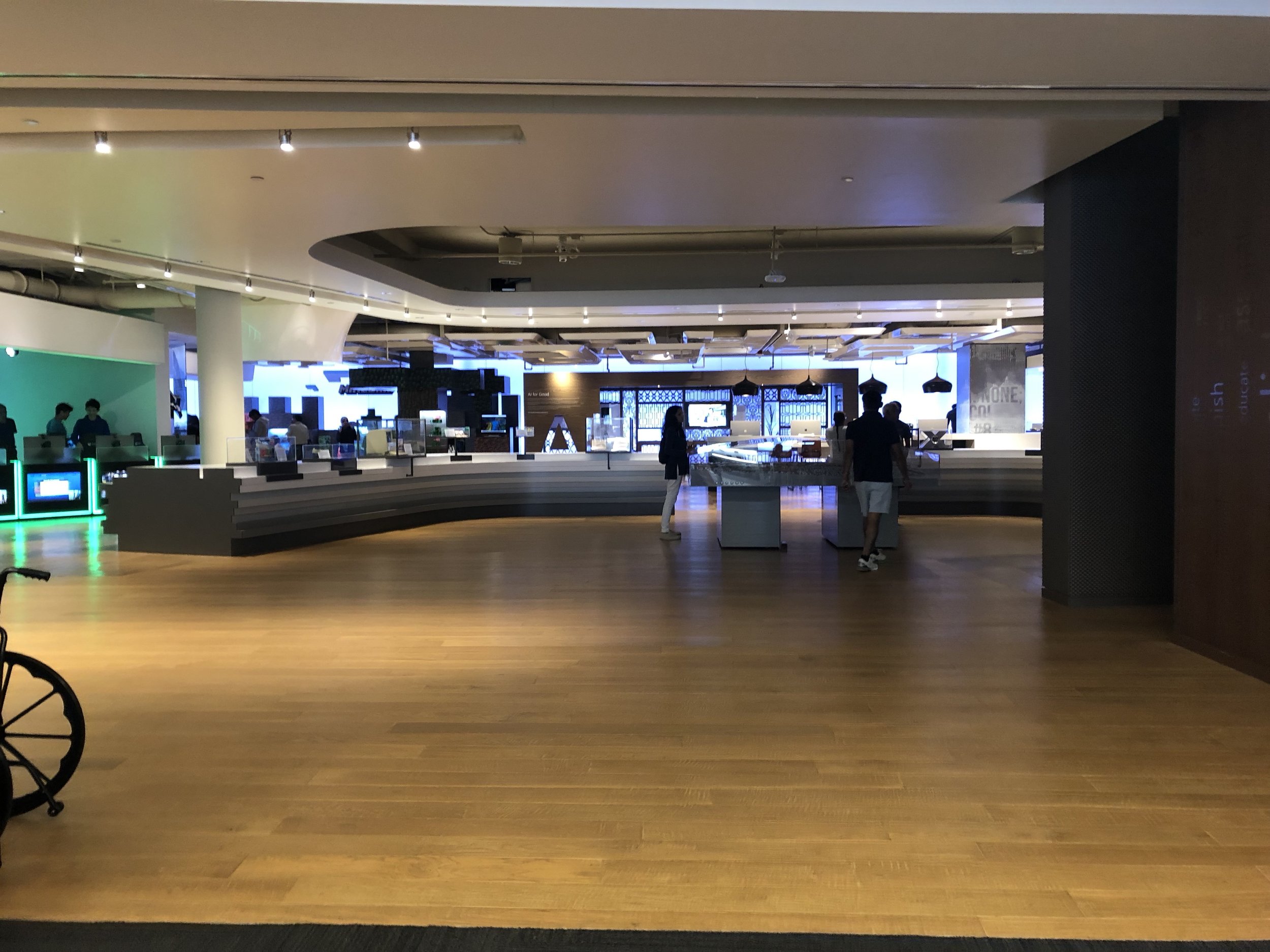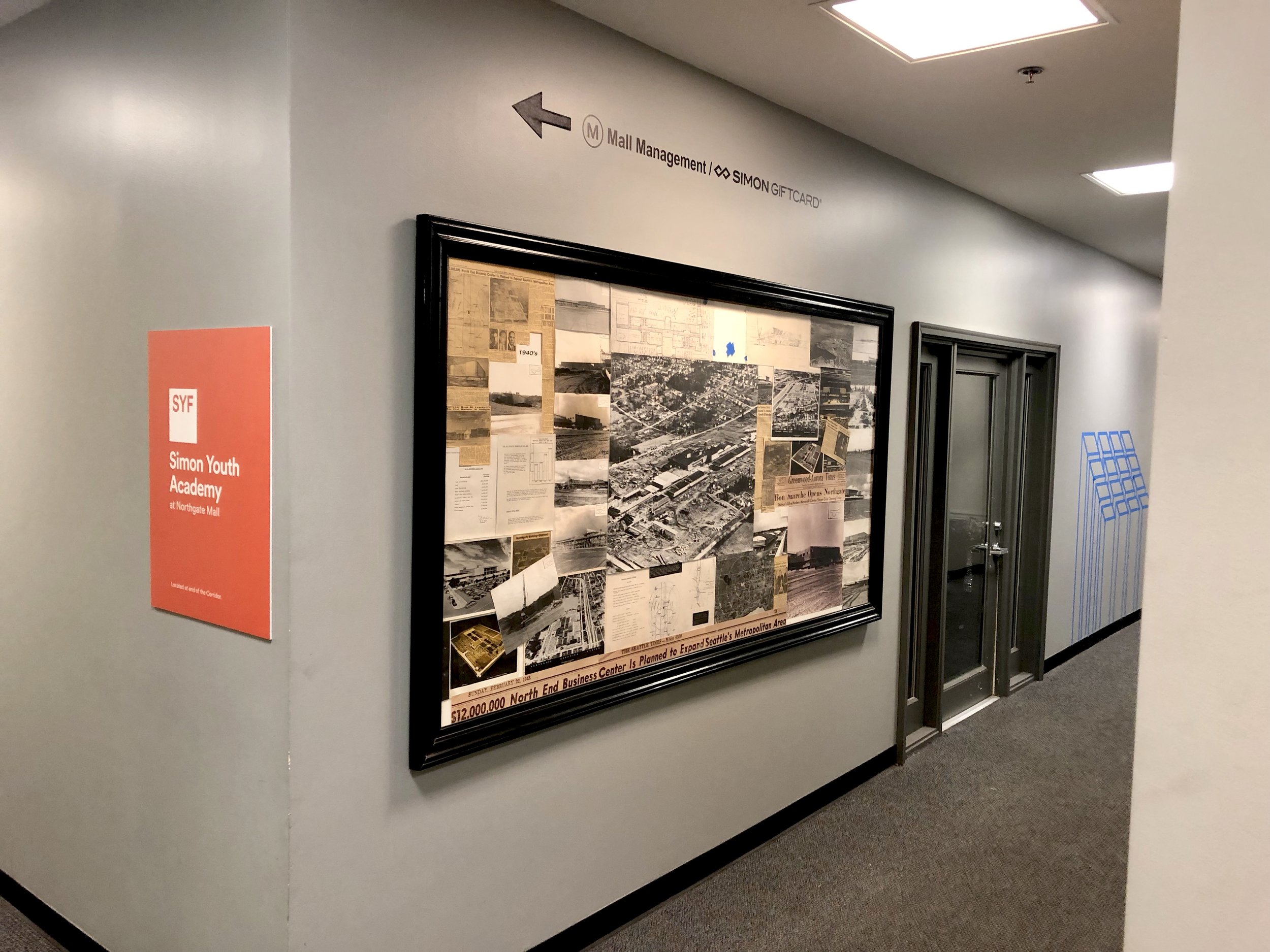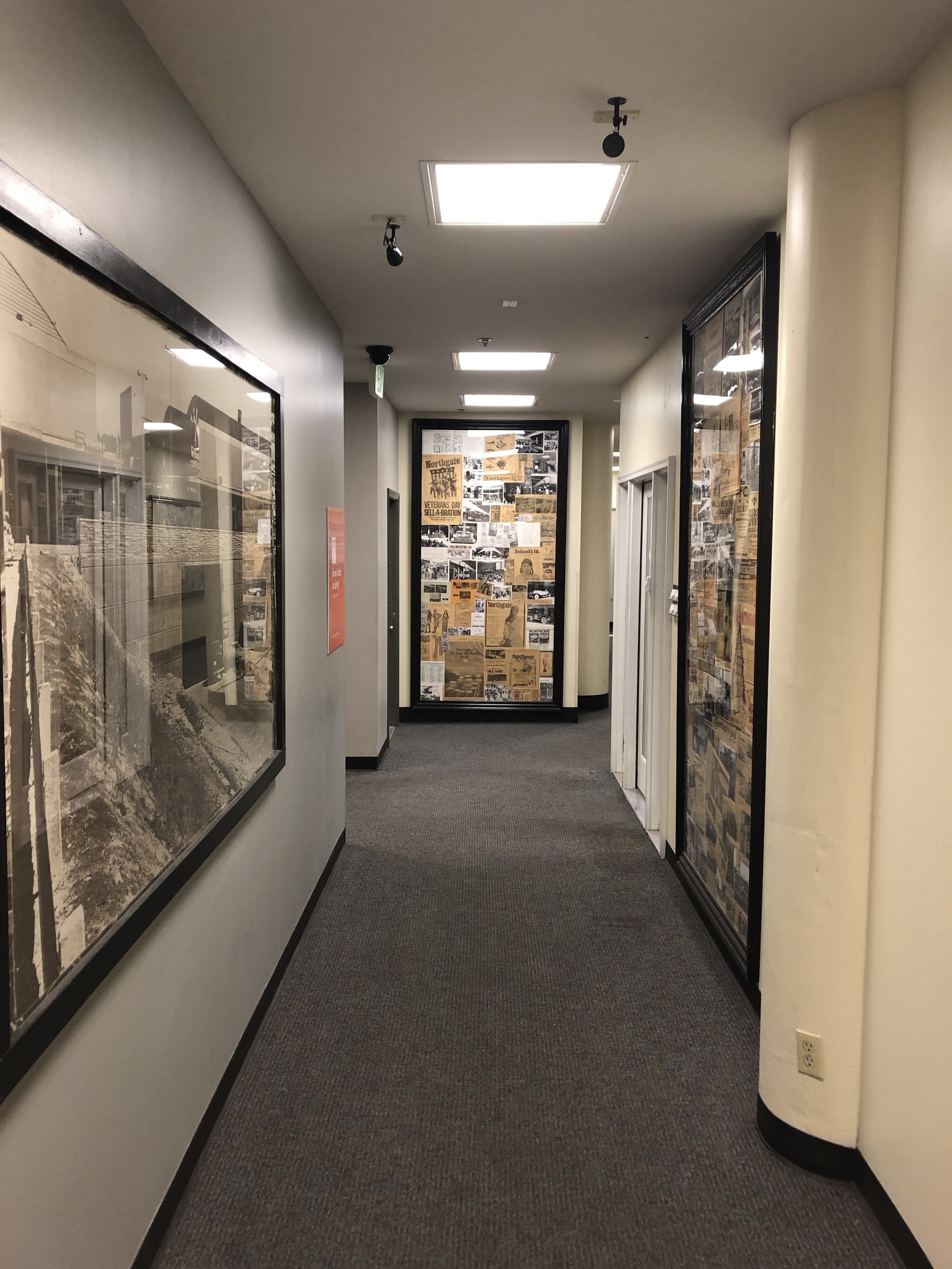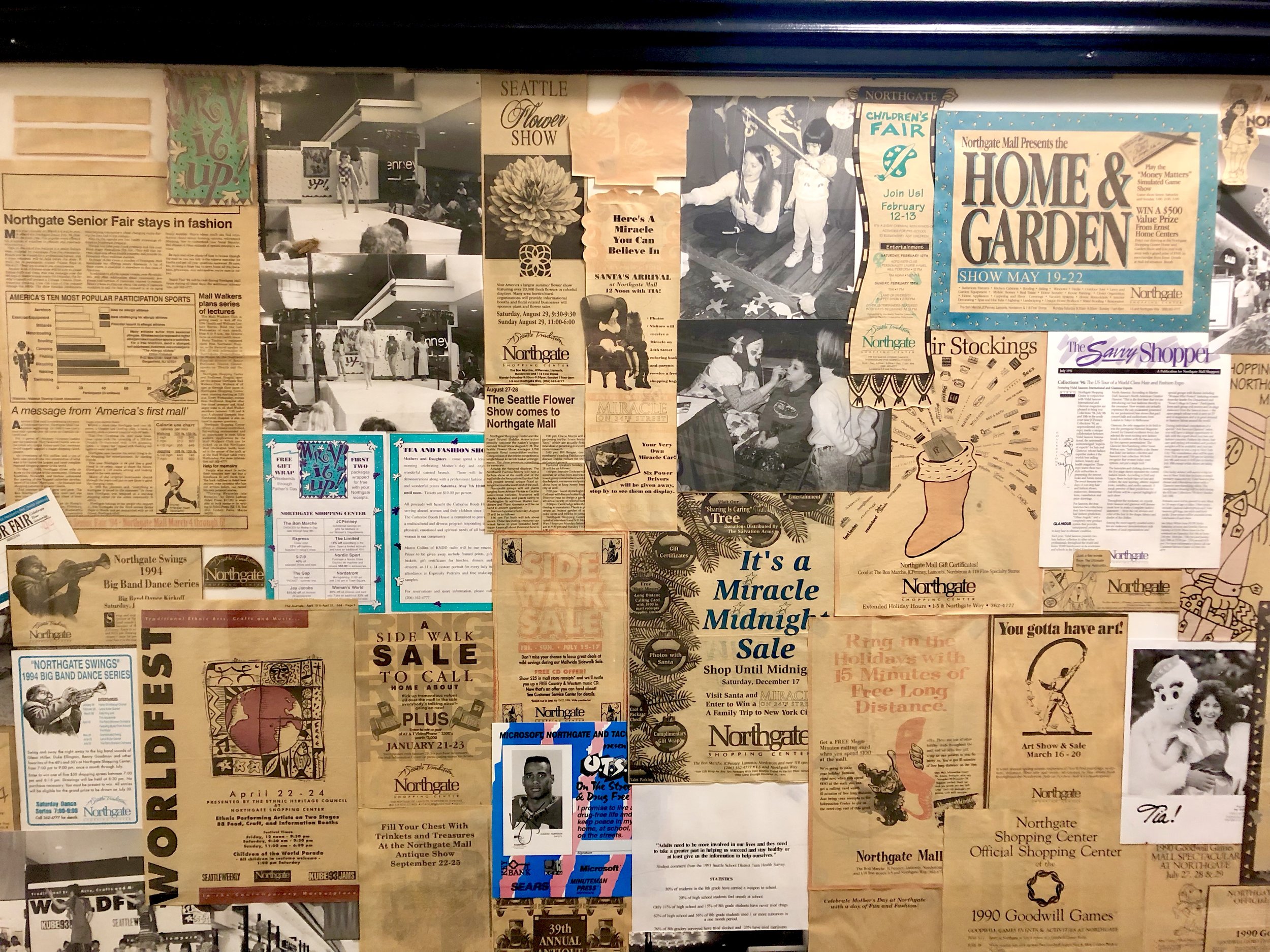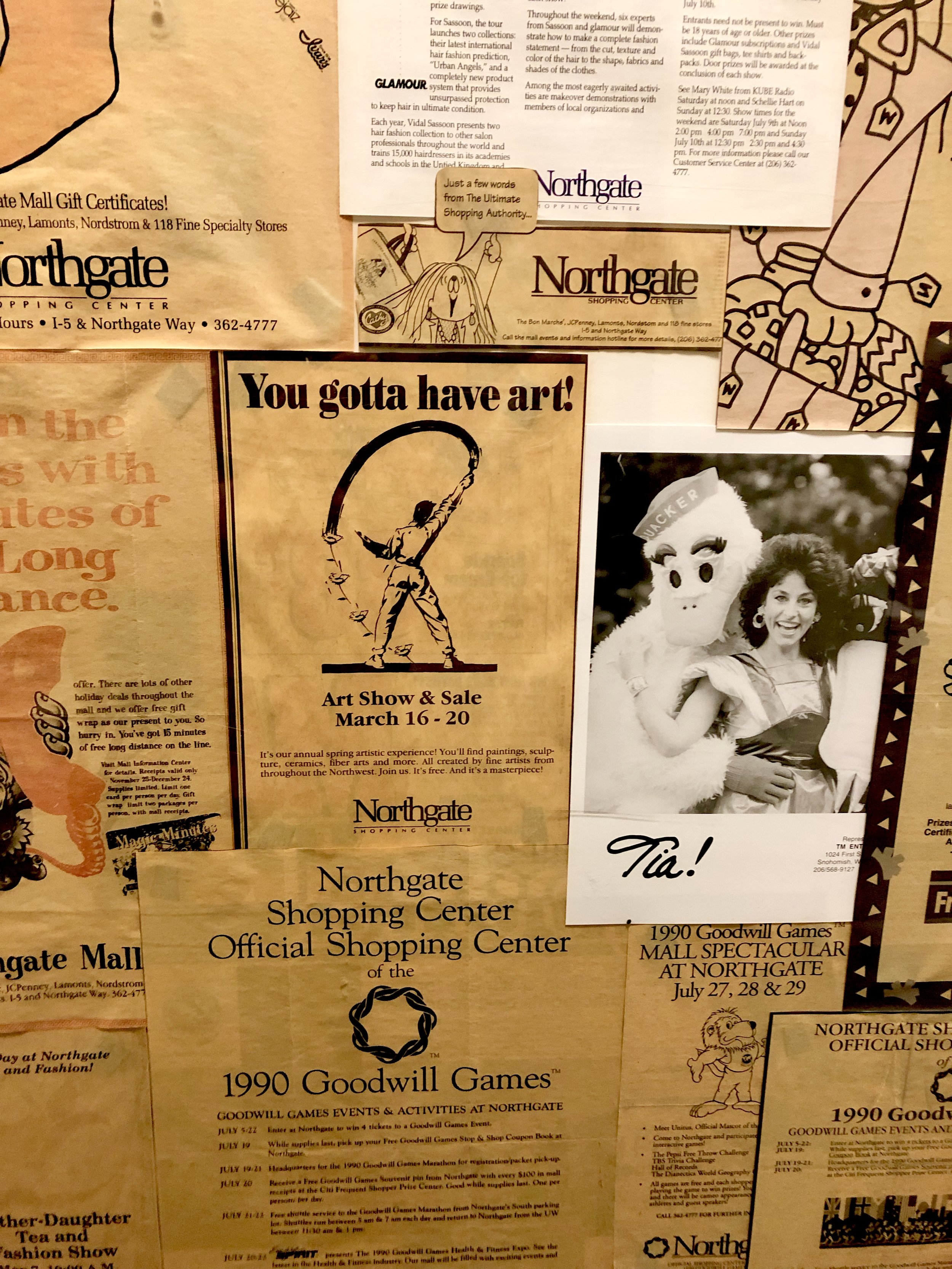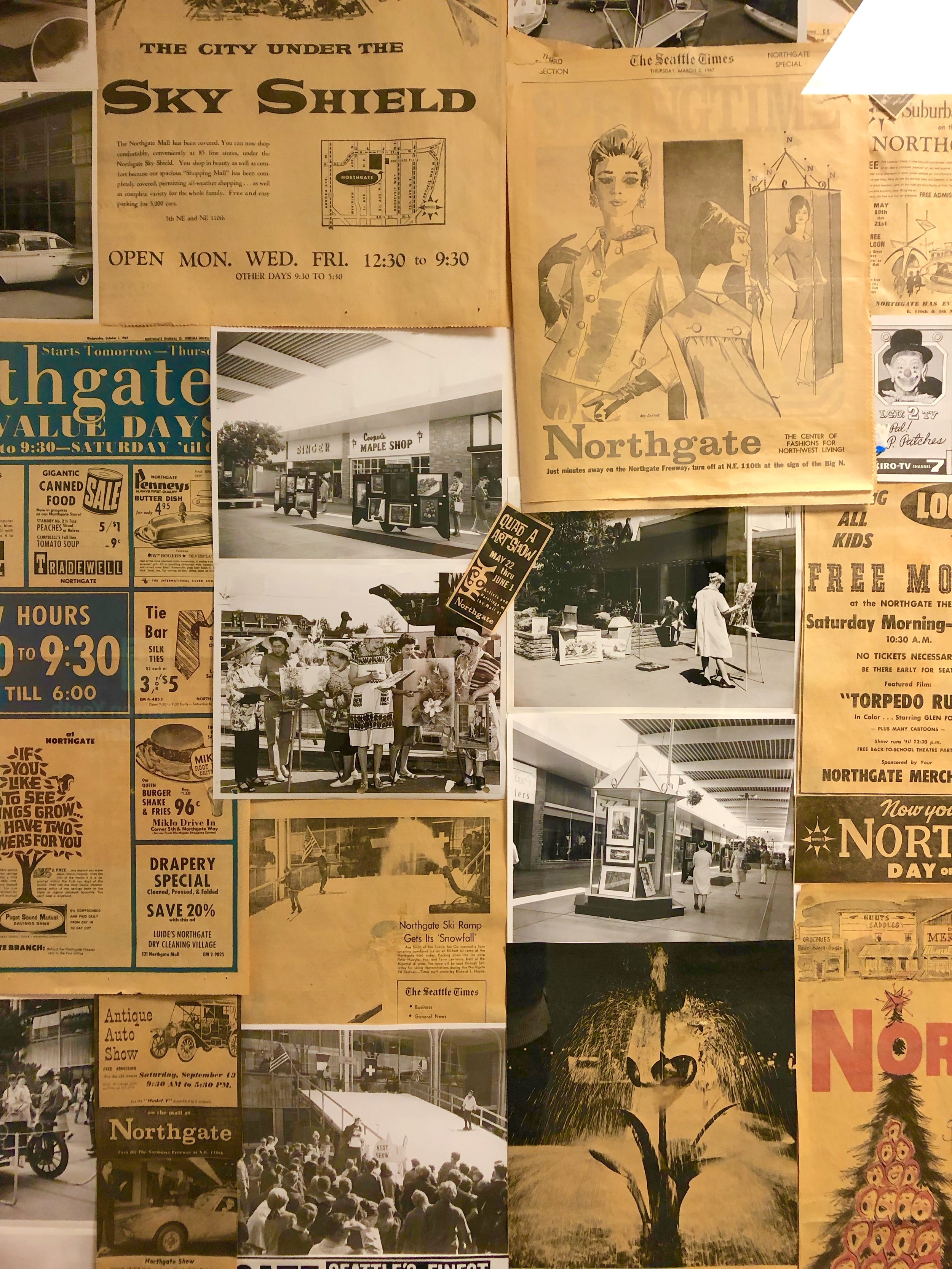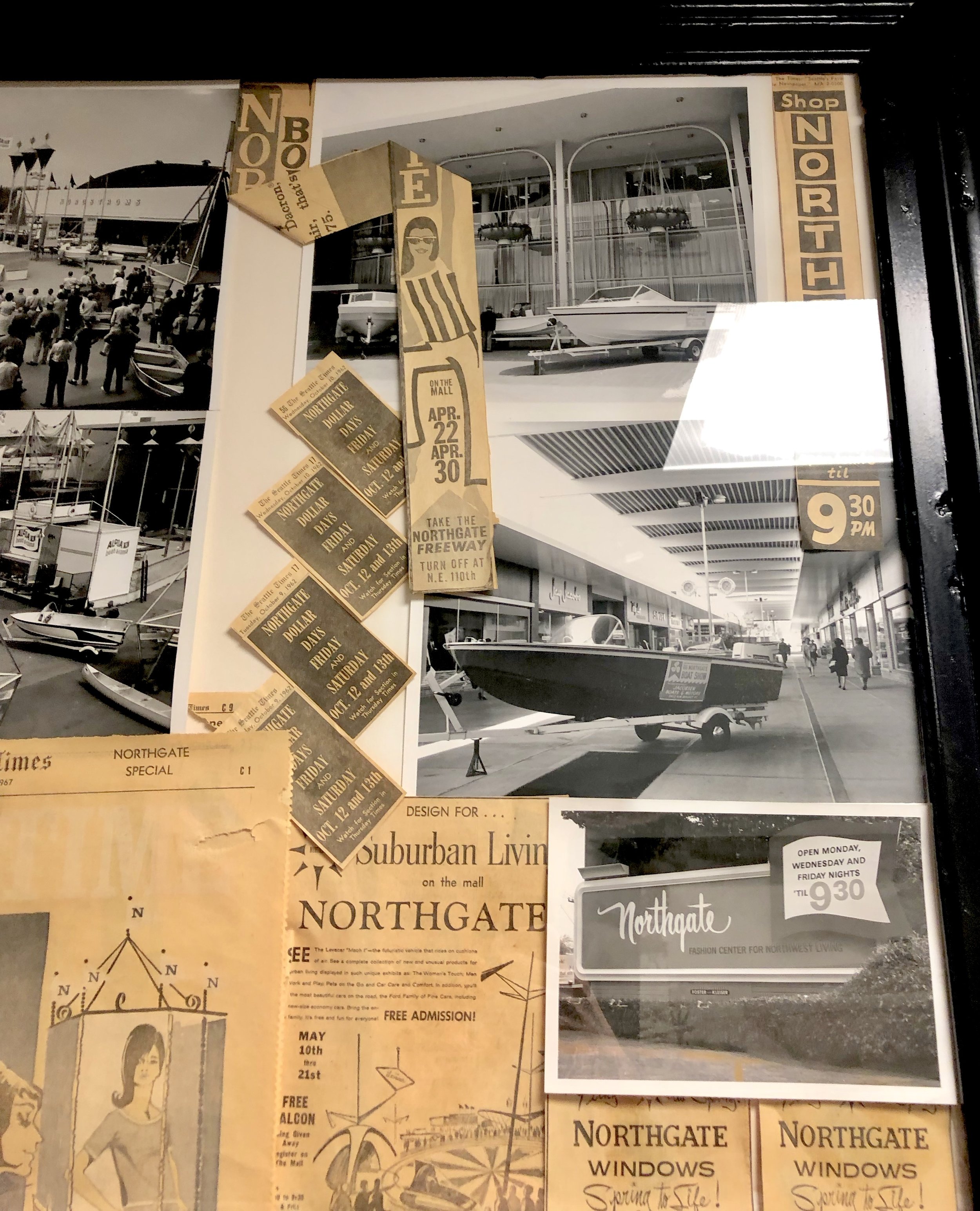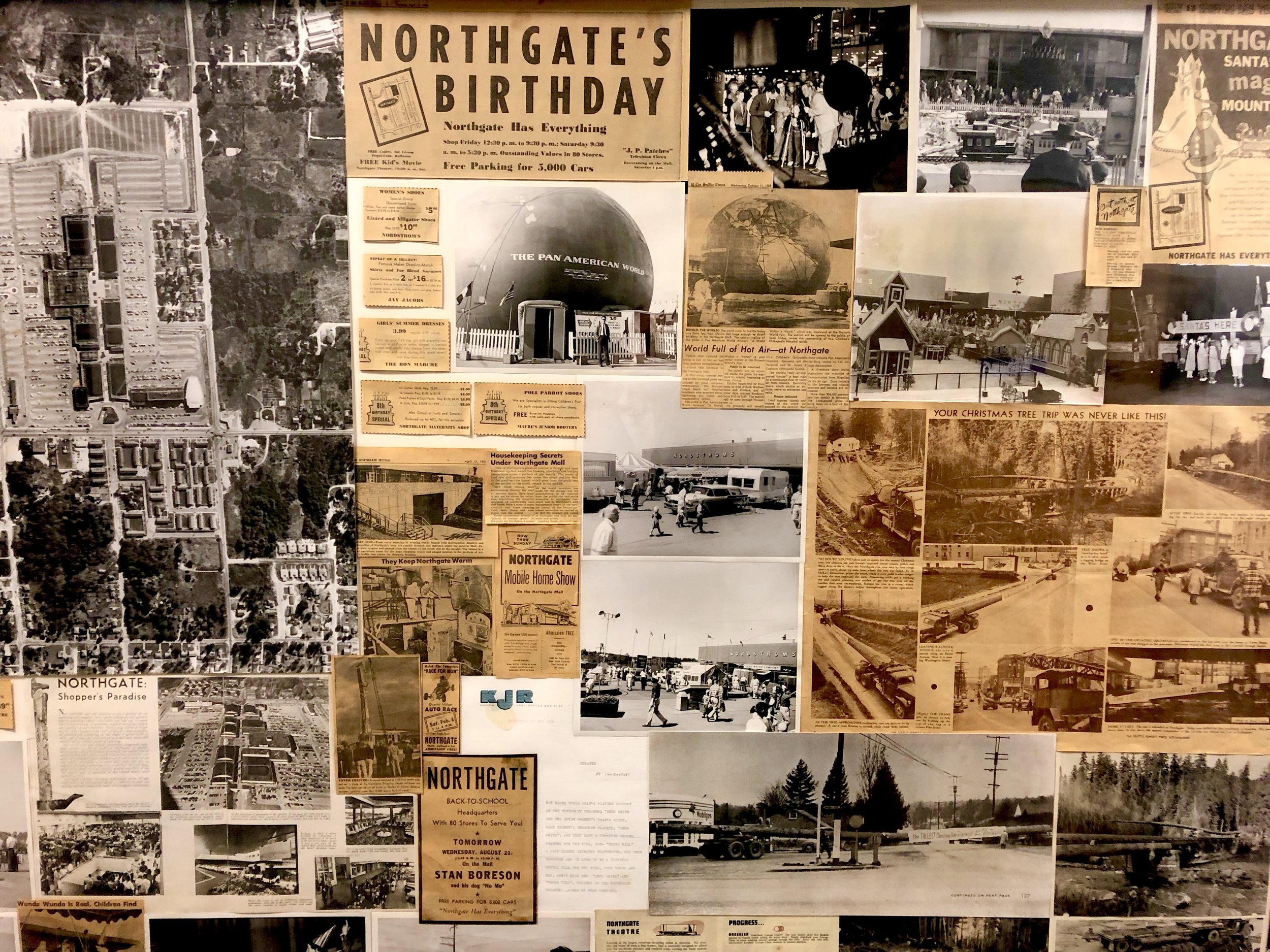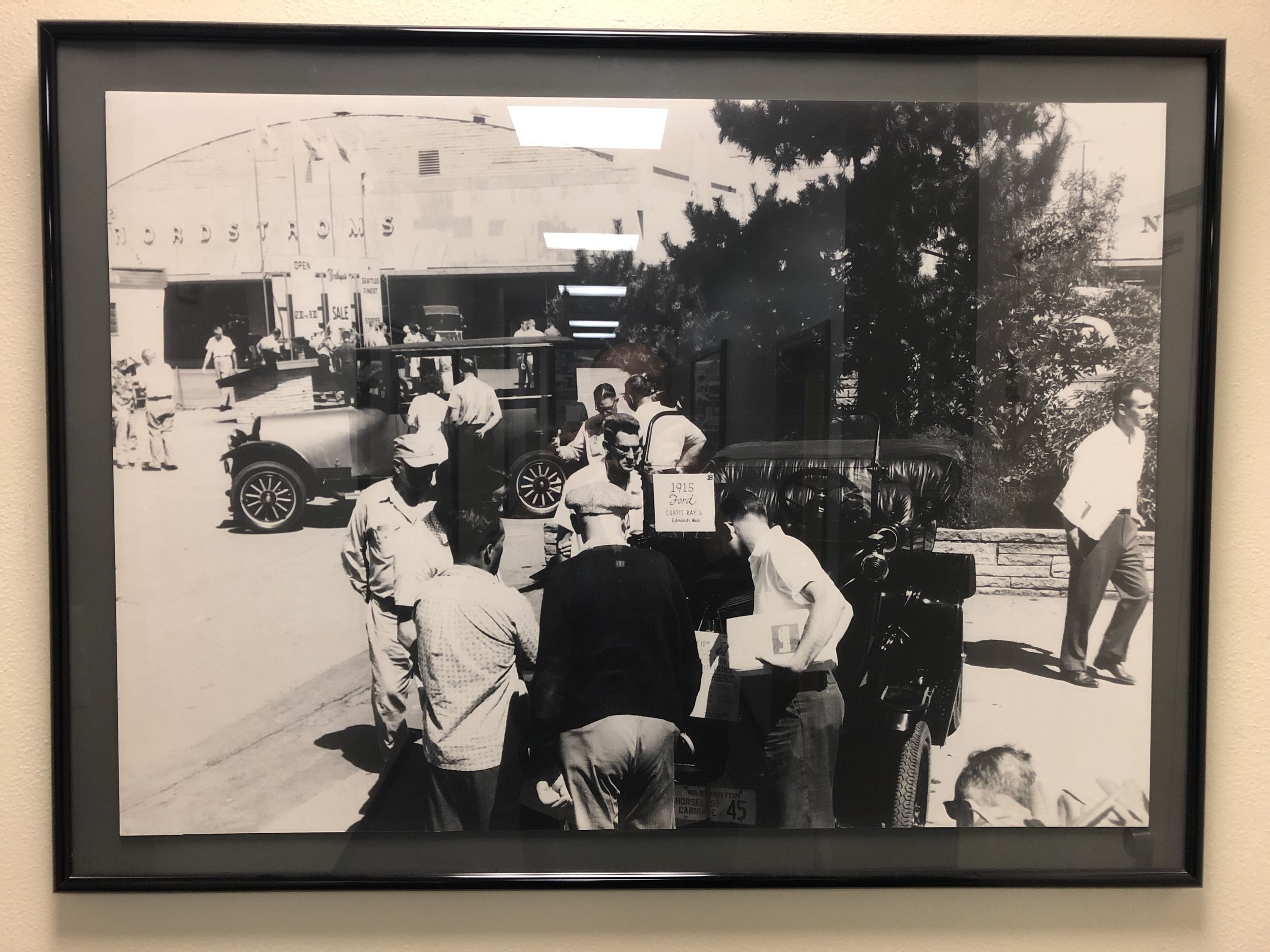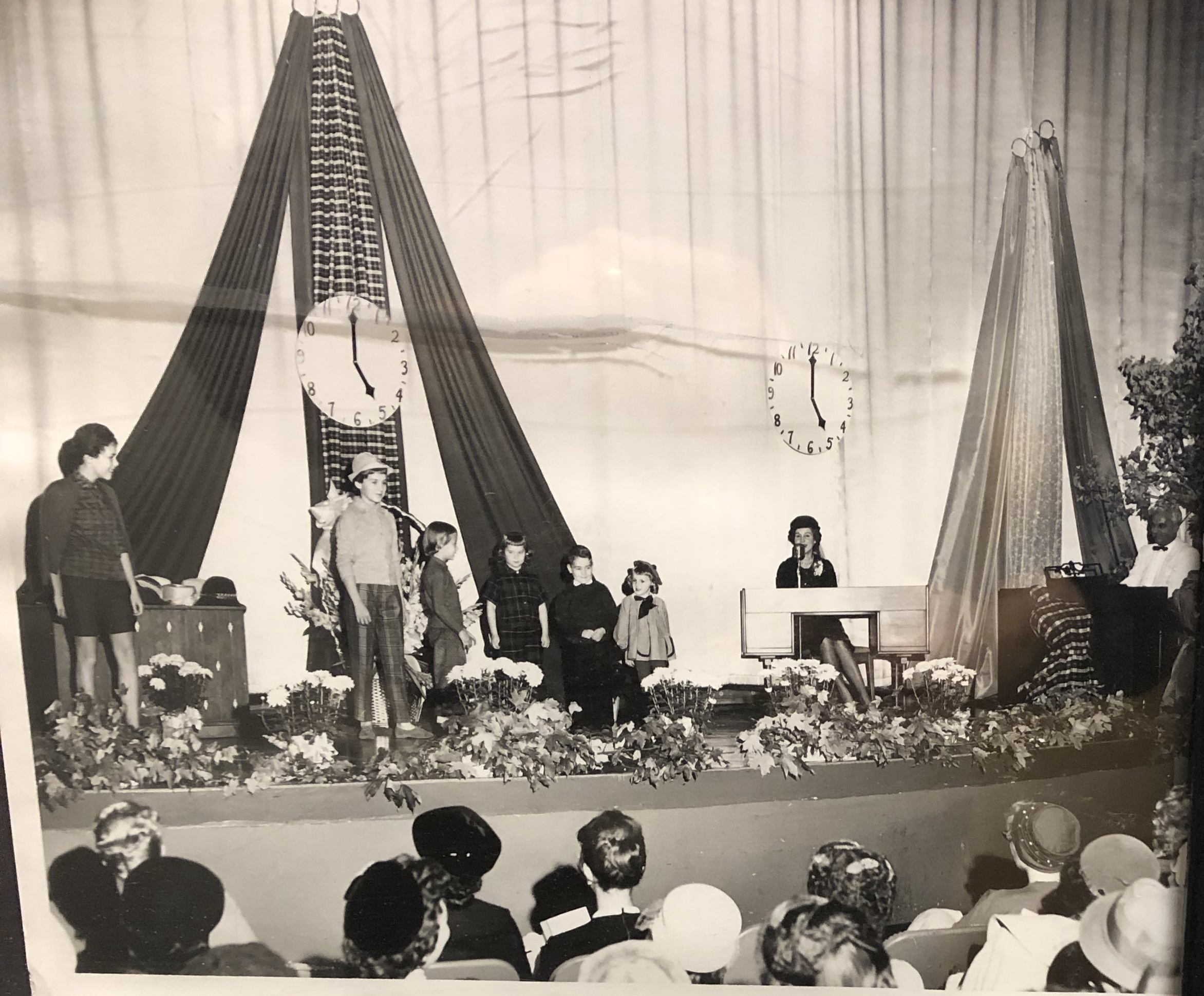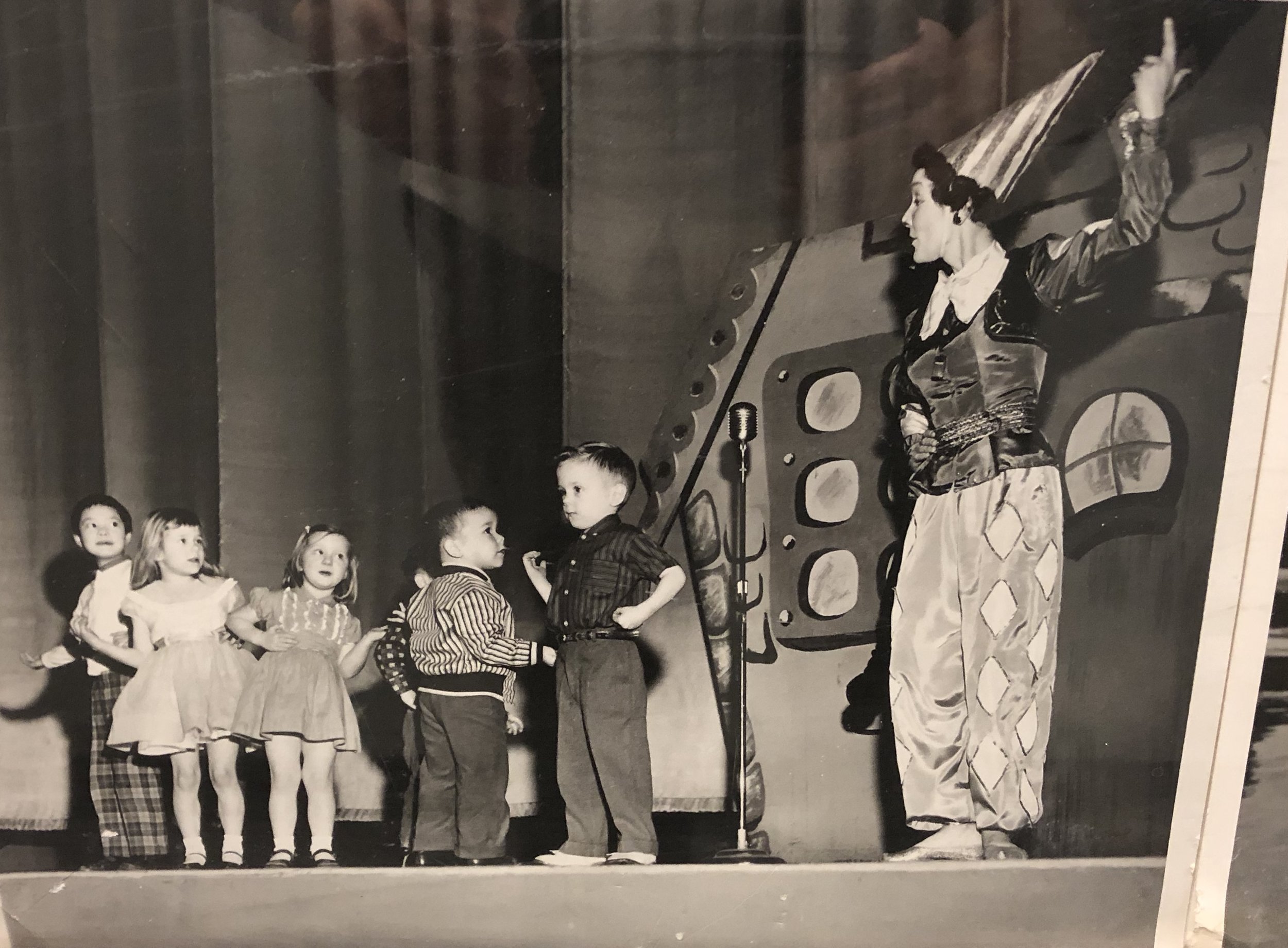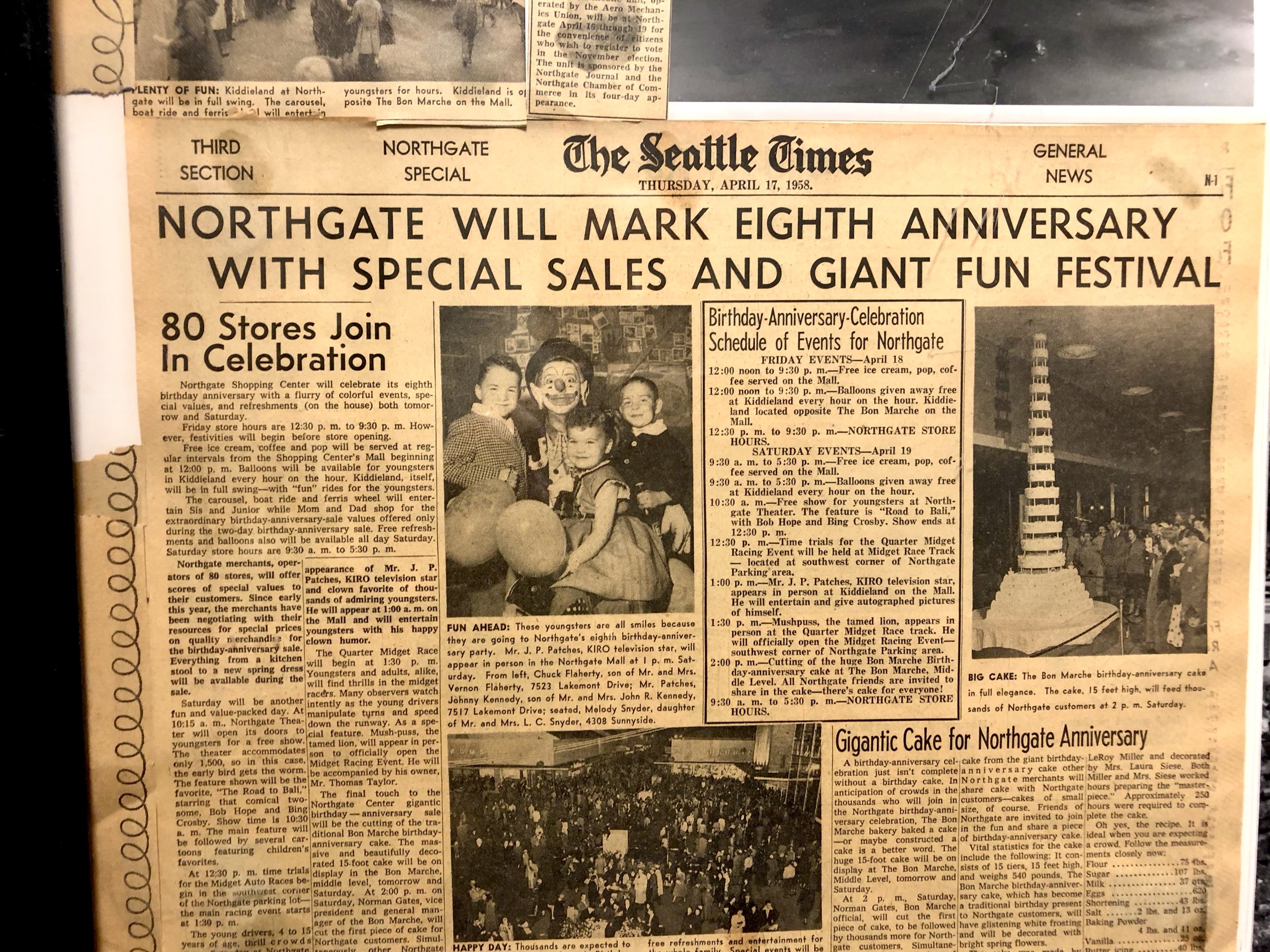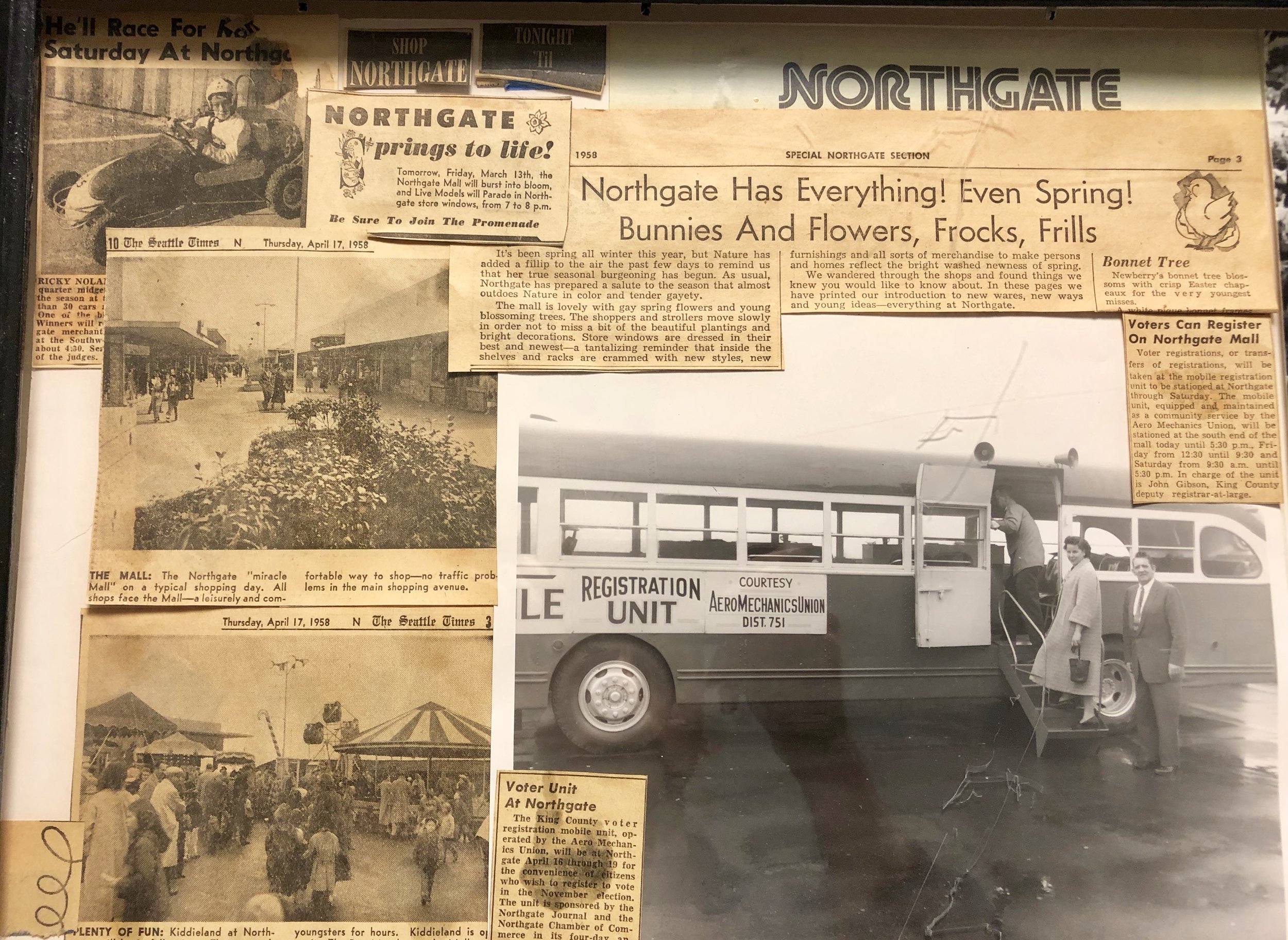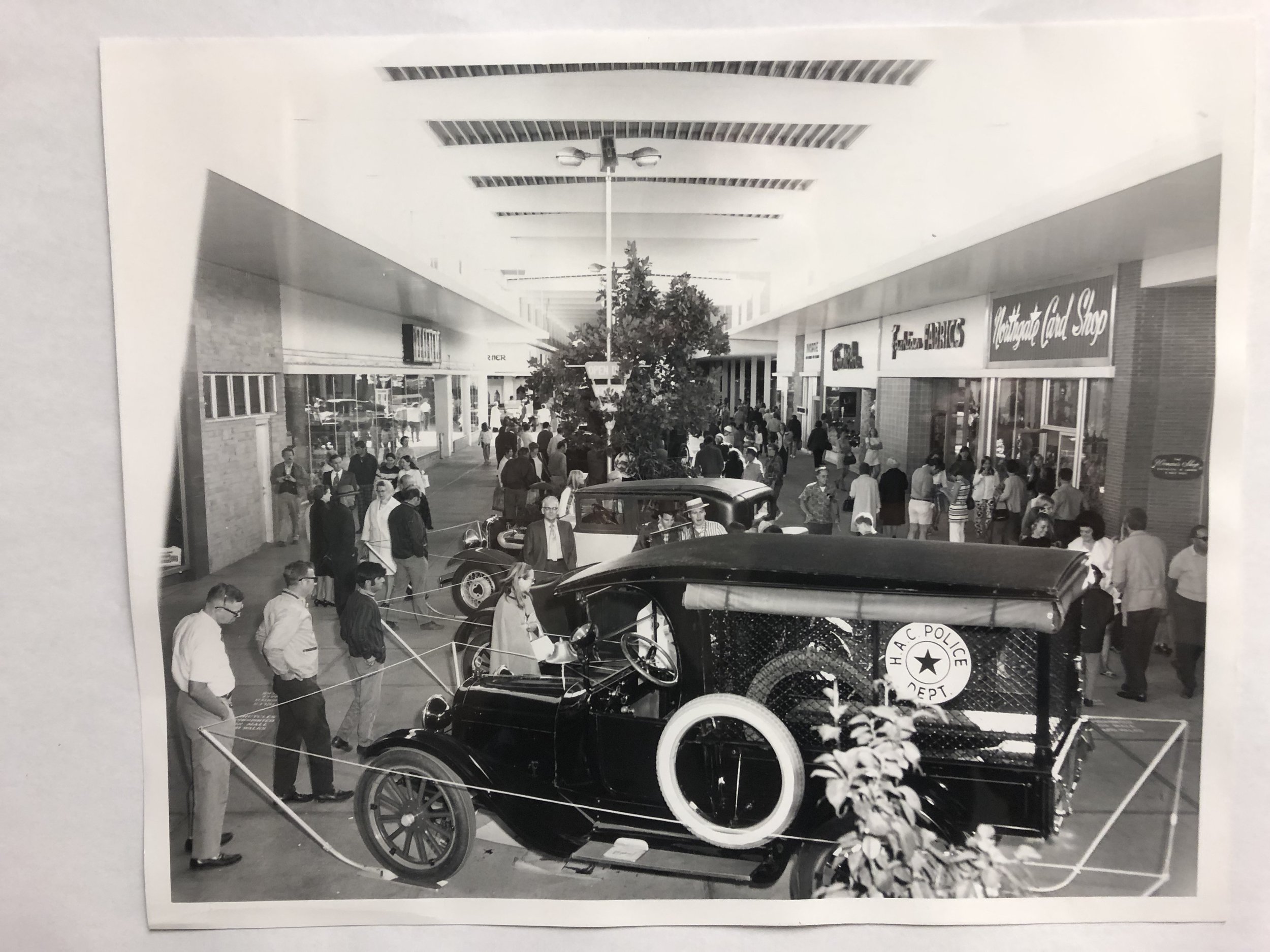The Donaldsons Stand Among Roslyn's Black Pioneers Part 5
Donaldson Presence in Yakima
This is the fifth part of a series on Roslyn’s Black Pioneers, made possible due to the diligent research of Lillian “Babe” (Donaldson) Warren and her husband Robert E. Williams through “The Donaldson Odyssey: Footsteps to Freedom” and the continued efforts of Donaldson family to bring their family history to light.
Donaldson Livingston Bentley family reunion in Cle Elum, Washington, 2011. (Paula Terrell)
The current Donaldson elders pay homage to the self-published family history book The Donaldson Odyssey for connecting across 5 generations. Without its carefully preserved records, they admittedly wouldn’t know much of where their ancestors’ footsteps across the country had taken them.
“There’s a lot in that book I have no knowledge of,” said Ray Livingston, the oldest of George “Sharkey”
Donaldson’s grandchildren. The family’s journey from a plantation home in Alabama to the coal mining towns of Washington State would be lost to him if it weren’t for book author and family member Lillian Babe (Donaldson) Warren’s scrupulous research. “I read about Jessee in The Donaldson Odyssey that Babe put together. Other than that, I haven’t heard of him.”
Now 86, Ray said that the Yakima he grew up in was a segregated town. Since he grew up with the division, he didn’t pause to think of its racist implications until later.
“Strangely enough, I didn’t realize we were being segregated. It didn’t cross my mind.” he said. “But now when people ask me, ‘Was Yakima racist?’ I tell them, ‘You bet it was.”
Of Yakima’s many taverns on 1st Street, Livingston says he grew accustomed to seeing signs that said, “We cater to white trade only.” If he wanted to attend a performance at Capitol Theater, he was made to sit in the balcony. There were other theaters in Yakima where he wasn’t welcome at all.
Because he was a regularly performing vocalist and singer, Ray evaded some of the restrictions placed upon Black patrons. He was allowed to enter in at the stage door along with everyone else. He does recall an occasion back in 1954-55 when he won a Yakima singing contest. He and some other performers from surrounding areas like Tacoma, Spokane, and Bremerton were invited on a trip to Hollywood. He, another Black singer named Sammy Pleasant, and four white singers together embarked south on this trip.
“They wanted to set us up at the Hollywood Hilton,” Ray said, “but the promoter turned to Sammy and me and said, ‘you guys can’t stay here.’ The white singers got to stay, but Sammy and I were brought to South Central LA instead.”
Though The Negro Motorist Green Book was in circulation at this time, neither Ray nor Sammy had access to it when they could have used it.
For those unfamiliar with it, The Green Book was the manual for travelers of African descent between 1936-1967 who needed to know which restaurants and lodging were inclusive safe spaces. The Smithsonian traveling exhibit, “The Negro Motorist Green Book,” vividly portrays what some of our American brothers and sisters endured as they faced the caustic realities of Sundown towns and hostile inequalities on the road.
Civil Rights in the PNW
Though the western road symbolizes freedom to many Americans, there are definite reasons The Green Book remained in print until the late 1960’s. With over 5% of the population being African American in Seattle, the disparities in jobs, housing, and de facto education became even more visible, and it was tiring to revisit the same restrictions the Civil War’s conclusion was meant to resolve a hundred years before.
The Civil Rights movement sparked by 1963 in Washington state. Committees such as Congress of Racial Equality (CORE) implemented strategies which included, as noted by Dr. Quintard Taylor in The Forging of a Black Community, “negotiation with store managers and direct-action boycotts with accompanying picketing of businesses.” Other influential organizations included the NAACP, the Urban League, and the Jewish Anti-Defamation League, which assisted non-white people who sought housing outside Seattle’s red-lined Central District.
The Donaldson family varied in their involvement and approach to the Civil Rights movement but all attest to its importance.
“I didn’t participate because I couldn’t be non-violent,” Lenora Bentley said.
Unfortunately, an early childhood incident with a white classmate calling her father a racial slur was far from the only brush with racism she experienced growing up. She recalls an occasion where her parents attended a Communist meeting—the offering of a free meal and drinks enticed—and her father was made to pay for it the following night.
She remembers how she and her sister were sleeping on a hideabed in the living room when police officers suddenly kicked down the front door and dragged her father outside.
“I didn’t understand why they had to drag my father---a Black man---in the middle of the night. They kept him for a day. At least long enough for Mama to bring him some clothes. My uncle [Henry Donaldson] came over and fixed the door,” she said, pausing to reflect. “It scared the hell out of us. How our government can drag a Black man. It still bothers me to this day. It really does.”
Lenora said that she saw a lot of good emerging from the Black Panthers, a community organization that a lot of the Donaldson “uncles” were part of. “They were trying to educate our young people. They gave them breakfast, money for lunches and dinners. A lot of older Black people donated.” Aware of the “dangerous” reputation that attached itself to the Black Panthers so readily, Lenora said, “It wasn’t a violent organization. I don’t feel it was.” Instead, she comprehends how the Black Panthers were necessary to protect people like her father from being signaled out for further injustices.
While there are always outliers who detract from the cause, Dr. Taylor suggests that Black Panthers were sometimes written off for their black leather and beret ensemble and inflammatory rhetoric. He says in The Forging of a Black Community, “Seattle’s Panthers established a free medical clinic, prison visitation programs, a statewide sickle-cell anemia testing program, tutoring programs, and a free breakfast program for impoverished children. They were also credited with quelling random violence and attacks on police and property in the Central District in 1968 and 1969 and participating in dialogue with Asian American business groups in the District through the Seattle chapter…”
One of the many things the Civil Rights Movement did was shatter “the illusion of inclusion” that began presiding over our region since before Washington became a state. Though the work is far from finished—as we hear Henry Donaldson recount in The Forgotten Pioneers— Dr. Taylor concludes “Courageous Seattleites—primarily Blacks but also some sympathetic Asians and whites—had, during the 1960’s, demolished decades-old barriers to opportunity and equality throughout the city.”
Beyond the Appearance of Color
From left: Ryan Anthony Donaldson, Rose Donaldson holding Jahvari Jr., Raymond Donaldson, Mary Donaldson, Gerald “Rocky” Donaldson, Cheryl Smith, at the Roslyn Cemetery Kiosk Dedication event, May 20, 2021. (Lori Beth White)
Since The Donaldson Odyssey’s inception, not every Donaldson family member has embraced the knowledge of their Black roots, though most pride themselves in having an ancestor who showed such unwavering courage and determination as family patriarch and Civil War veteran Jessee.
Paula said her great uncle’s children were told to “stop acting Black” and that she watched them “being put down for presenting as they really are.” She said that she handed a copy of The Donaldson Odyssey to a cousin and that it “took a while for her to digest it and decide that she wanted to come in. She was told she was white growing up and later learned she was part of this larger family.”
Paula has one relative who has yet to reach back after being told of her Black ancestry, saying “she is probably comfortable with who she is being white, but she probably knows in the back of her head” there’s more to her story.
Not everyone from Jessee’s direct bloodline visually presents as African American, but they still closely identify with their Black ancestry and celebrate it.
“We have a number of people like Ryan and myself who don’t look Black at all,” family member Al “Butch” Smith said, adding that he has a biological sister who has dark skin, both of whom are the children of Al Smith Sr. and Isabelle “Izzy” (Donaldson) Smith. “There are a few of us who essentially look white, but don’t identify as white. We pass in the context of white privilege since people don’t know our history.”
Group photo from the 2016 Donaldson Livingston Bentley (DLB) Family Reunion in Cle Elum, Washington. (Paula Terrell)
“We’re a proud family,” Paula said, reflecting the various shades that comprise the Donaldsons, Bentleys, and Livingstons. “I love all the different dynamics. I embrace every aspect.”
A Reflection on Jessee
While much is already researched and written on them, the Donaldsons continue charting their family’s legacy.
Over a dozen Donaldsons attended the 44th annual Roslyn Black Pioneers Picnic in August 2022. They cherished the opportunity to exchange stories of their Roslyn roots with the Cravens, the only original Black pioneer family who still resides in the coal mining town. The picnic has a celebratory tone every year, yet there’s also seriousness to the time when ancestors are spoken of and remembered with respect.
The Donaldsons are writing a narrative account expanding on Jessee and Anna’s lives. Built upon the foundation of The Donaldson Odyssey, this new account will include additional details that have been discovered with an intended audience of intergenerational family members. It is important for each generation of Donaldsons to understand their Alabama and Tennessee roots.
They also want to research the white Donaldsons prior to the Revolutionary War. Lenora said, “I want to know more about our white side. Who were they? What kind of people were they?”
Ryan echoed her sentiment, saying “I’ve wondered about them too. With [my wife] Lori’s parents living 30 minutes from the original planation in Hazel Green, Alabama, we went to visit it. While we there, we came across some of Levi and Charlotte’s line, and we paid our respects at the gravesite. We wanted to center our Black relatives first and [though it’s still our focus], we are interested in knowing more of the white side.”
Tia Juanita Jackson, one of Jessee and Anna’s descendants, said that she revisited The Donaldson Odyssey a year ago and that the work Babe did on it is extraordinary. She wouldn’t have known about her Alabama roots without the anthology. If there’s anything left to uncover, Tia said she’d like to know more about matriarch Anna and the women who followed in her footsteps. “The women in our family are strong. I’d love to know more about Anna and see where that gene came from. I’m curious to know how she lived her life. There’s a church characteristic that runs through out family. I have distinct memories of going with Aunt Lenora and Aunt Babe, and it [appears] evangelism is woven into our fabric. I don’t know much about the women, the sisters in our family, and I’d really like to.”
Jessee Donaldson photograph in McNeil Island Penitentiary Inmate Intake Register, December 17, 1902. (National Archives at Seattle)
Since made aware of the verified image of his five times great-grandfather, Ryan said his impression for what Jessee endured has deepened considerably. The photo depicts Jessee on the day of his arrest in December 1902, decades after fighting for his freedom with the United States Colored Troops in the Civil War.
Upon seeing the image of Jessee for the first time ever this July, relative in-law Vernon Jackson couldn’t stop marveling over the uncanny resemblance Jessee shared with Jessee’s son, George “Sharkey” Donaldson, a man he said, was “tall, handsome, always chewing tobacco and carrying a Folgers can around. He was a wonderful man and treated us real good.”
Ryan said “I thought about how Jessee had to spend Christmas without his family. The sensitivity in his eyes amidst another episode of indignity in his life. How Jessee's life literally shows the connection between enslavement to the development of prisons in the United States. Seeing through his body posture the physical pain and injuries he sustained. I am astounded that Jessee summoned the strength and fortitude to work the difficult and dangerous labor in the coal mines in Roslyn.”
Ryan said it’s bittersweet knowing that this verified photo came from Jessee’s incarceration. He wishes the circumstances were different, such as the photo of Jessee attending one of his children’s weddings.
“I also recognize how rare it is for us, as an African American family, to even have a photo of our patriarch, a man who had been born enslaved in 1846 and had passed on in 1913. Many families do not have any photos of their enslaved ancestors.”
Despite reflecting on the gravity of Jessee’s experiences, Ryan and his family see with Jessee’s photo a renewed a sense of purpose and hope. Jessee rose above his circumstances at every turn, and he never stopped advancing toward the life he and his family desired. It’s time more people knew his name.
In a letter from Babe to the Roslyn Museum, Babe summed up the overall goal carried forward today, for the Donaldsons “to take their rightful place as part of the history of Roslyn,” joining alongside their fellow Black Pacific Northwest pioneer families, including the Cravens, Barnetts, Breckenridges, Taylors, and Harts.
Resources for Further Research:
13TH (film). Netflix, 2016.
BlackPast.org, blackpast.org
Equal Justice Initiative, eji.org
Hayes, Ralph. Black Miners. Unpublished manuscript draft. Undated. Ralph C. Hayes papers, 1941-1999. Accession No. 5361-001. Folder “Writings: Black Miners’ Typescripts.” Box 7. University of Washington Libraries Special Collections.
Hayes, Ralph. Northwest Black Pioneers: A Centennial Tribute (Seattle, WA: Bon Marche), 1994.
Moore, Ernest. The Coal Miner Who Came West. (Self-published), 1982
Mumford, Esther Hall. Seattle's Black Victorians 1852-1901 (Seattle, WA: Ananse Press), 1980.
Shideler, John C. Coal Towns in the Cascades: A Centennial History of Roslyn and Cle Elum, Washington (Spokane, WA: Melior Publications), 1986.
Stevenson, Bryan. Just Mercy: A Story of Justice and Redemption (One World), 2015.
Taylor, Quintard. The Forging of a Black Community: Seattle's Central District from 1870 through the Civil Rights Era (Seattle, WA: University of Washington Press), 2022.
"The Forgotten Pioneers", produced by Nerissa Williams and Lisa Cohen - Washington Centennial Ethnic Heritage Project. “First Sunday” series. KIRO, 1988. Item 8831, Record Series 3902-01, Seattle Municipal Archives. https://archive.org/details/SMA_8831
Trimble, Jaymi. Roslyn (Images of America). (Mount Pleasant, SC: Arcadia Publishing), 2008.
Warren, Lillian C. and Robert E. Williams. The Donaldson Odyssey: Footsteps to Freedom (Seattle, WA: L.C. Warren and R.E. Williams), 1991.
Wilkerson, Isabel. Caste: The Origins of Our Discontents (New York, NY: Random House), 2020.

